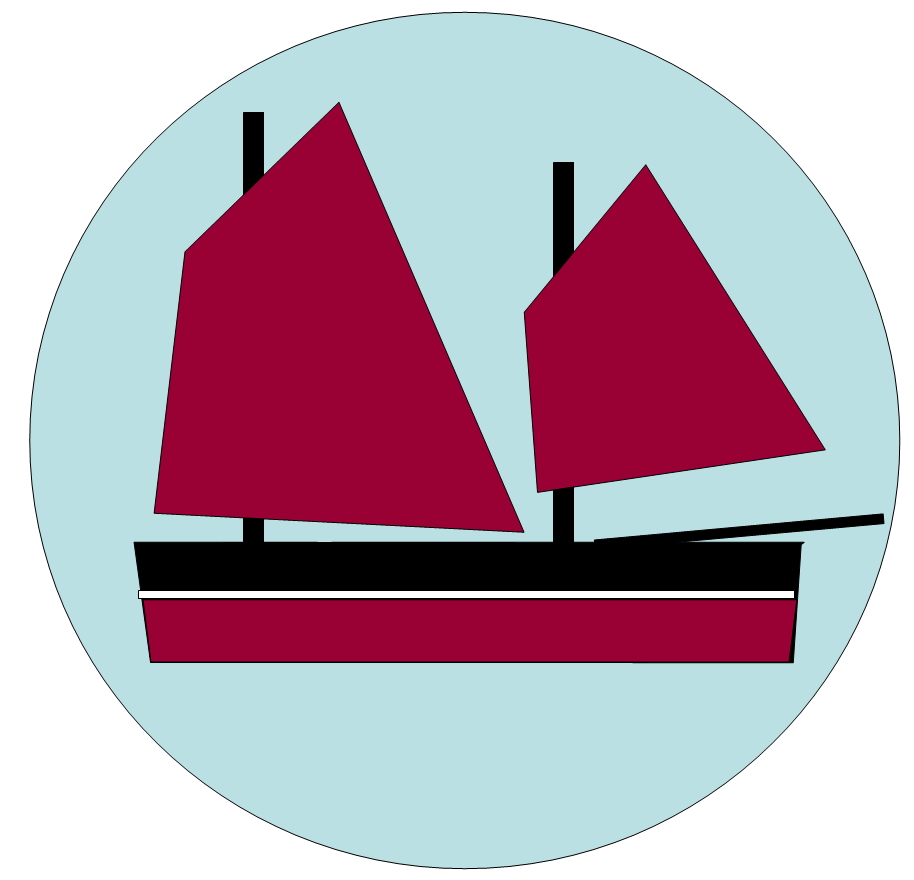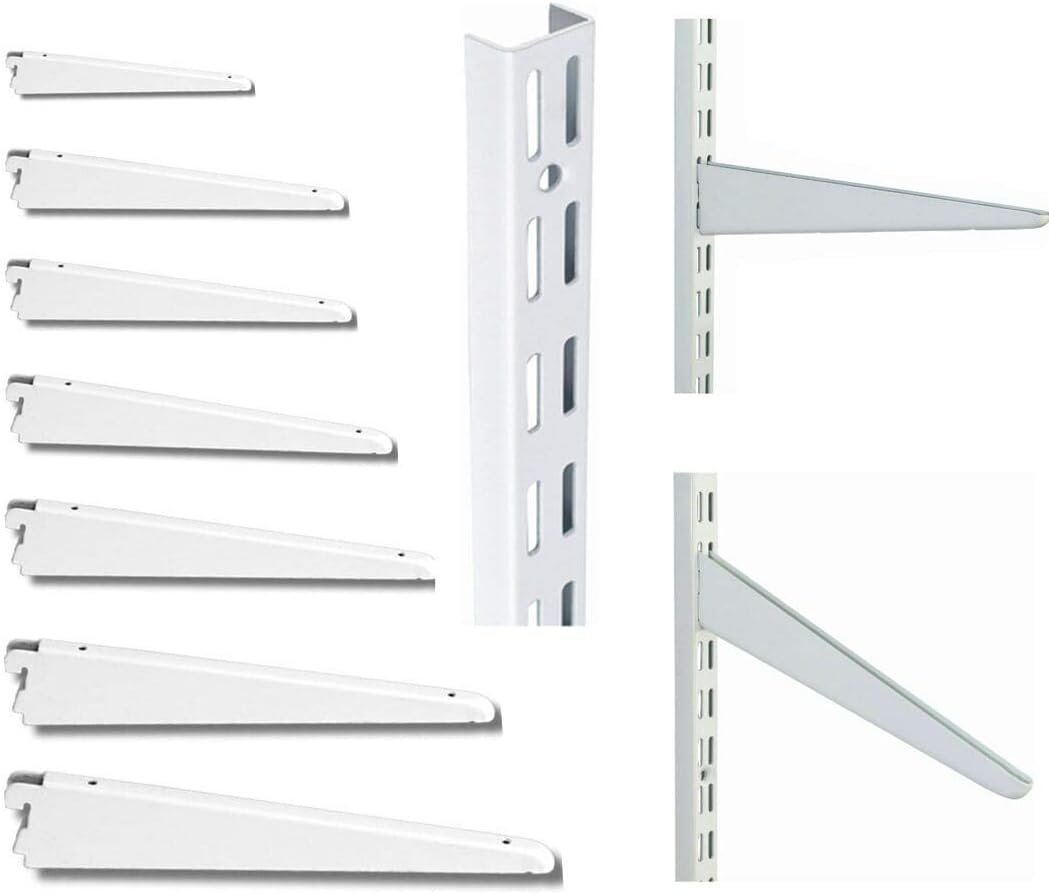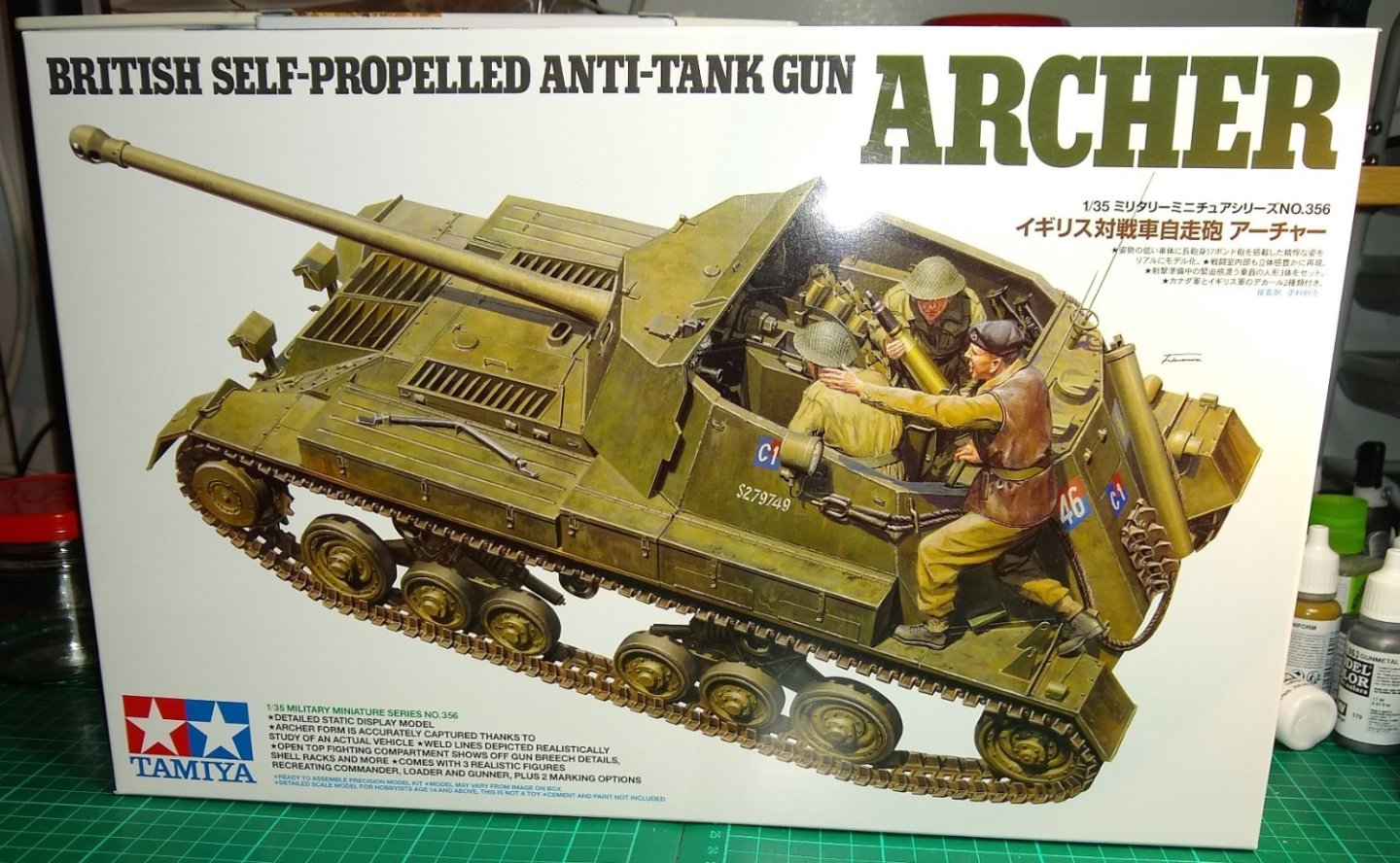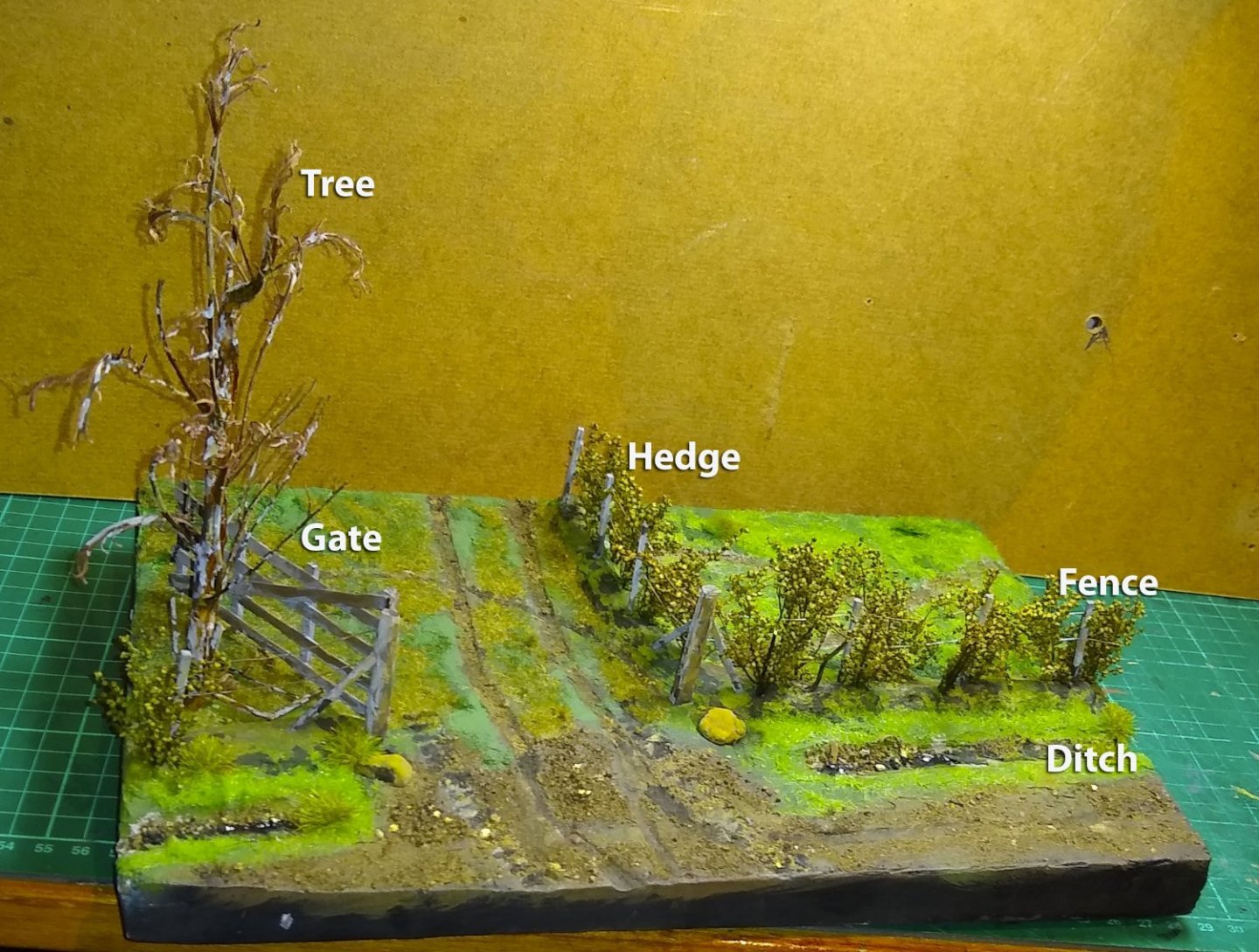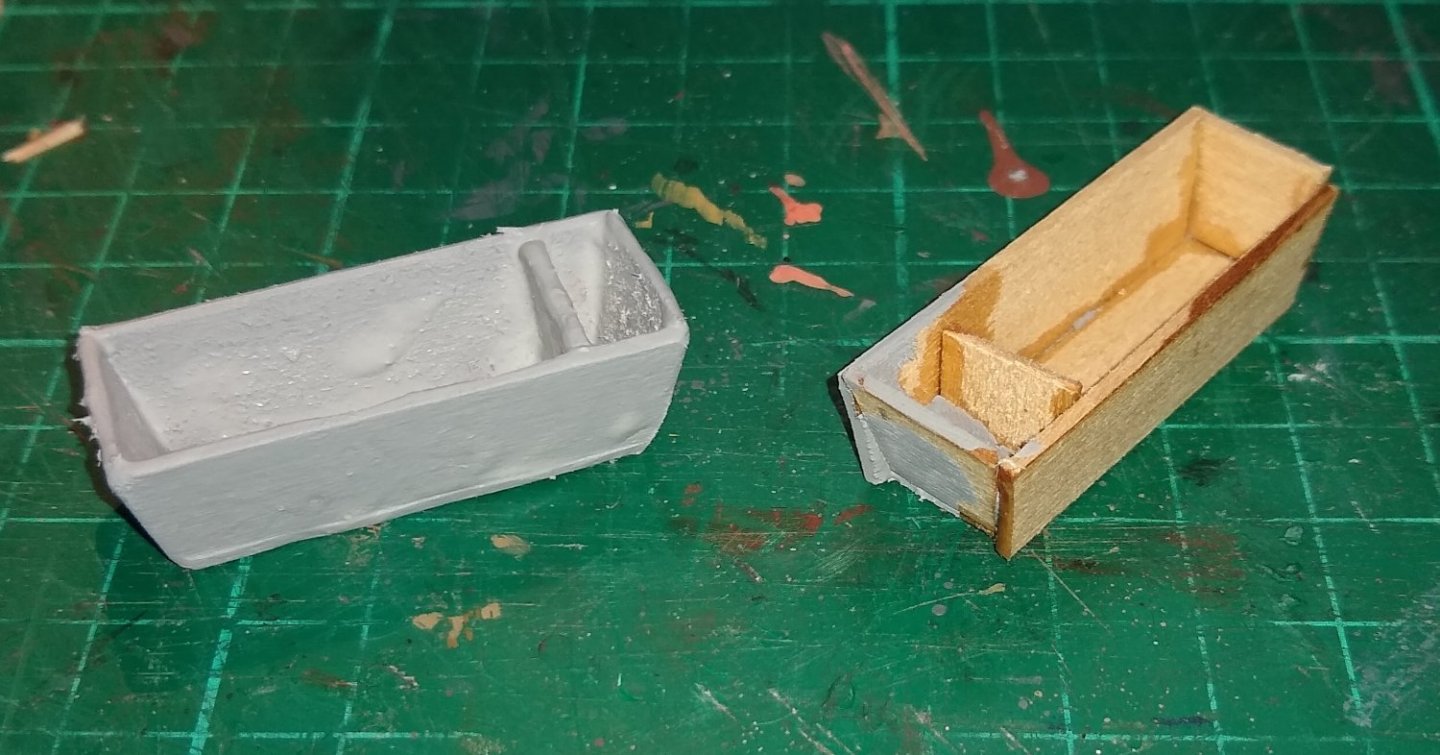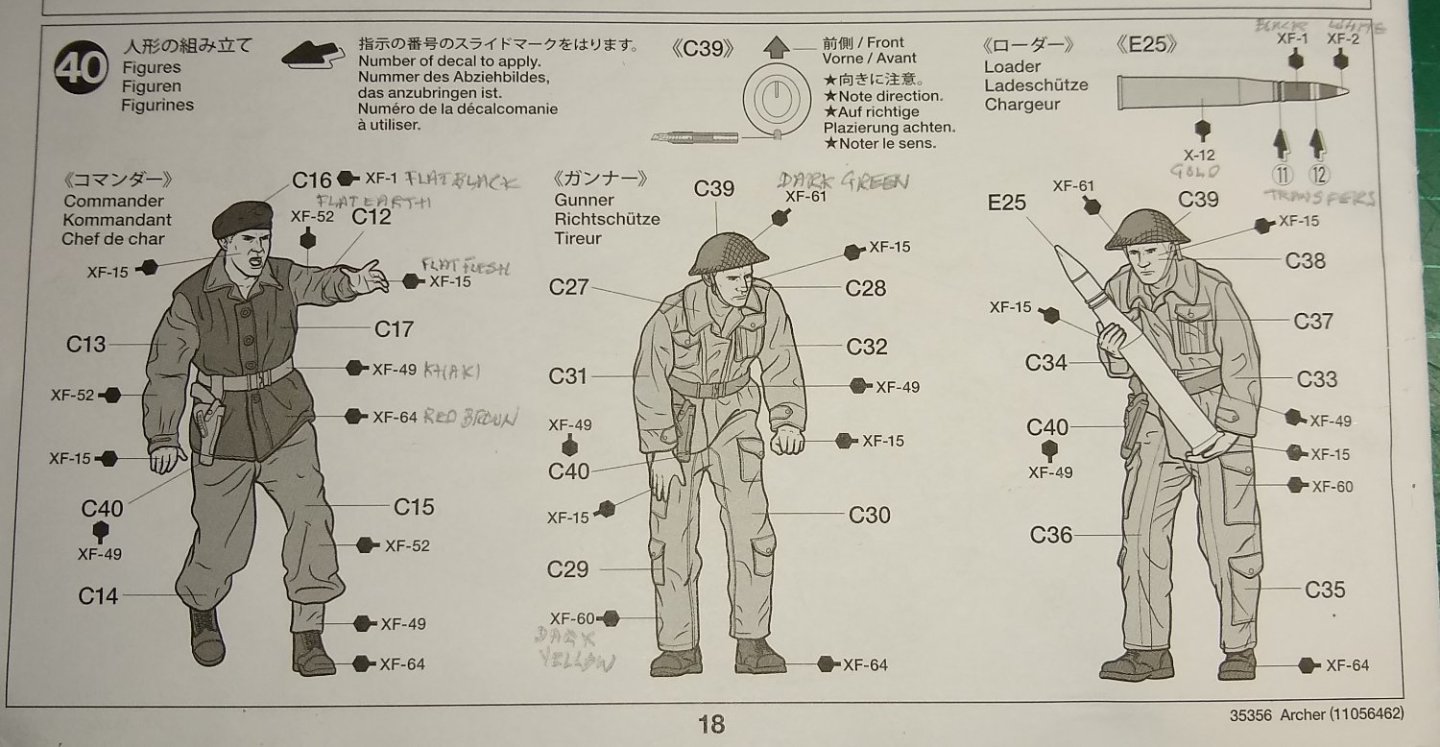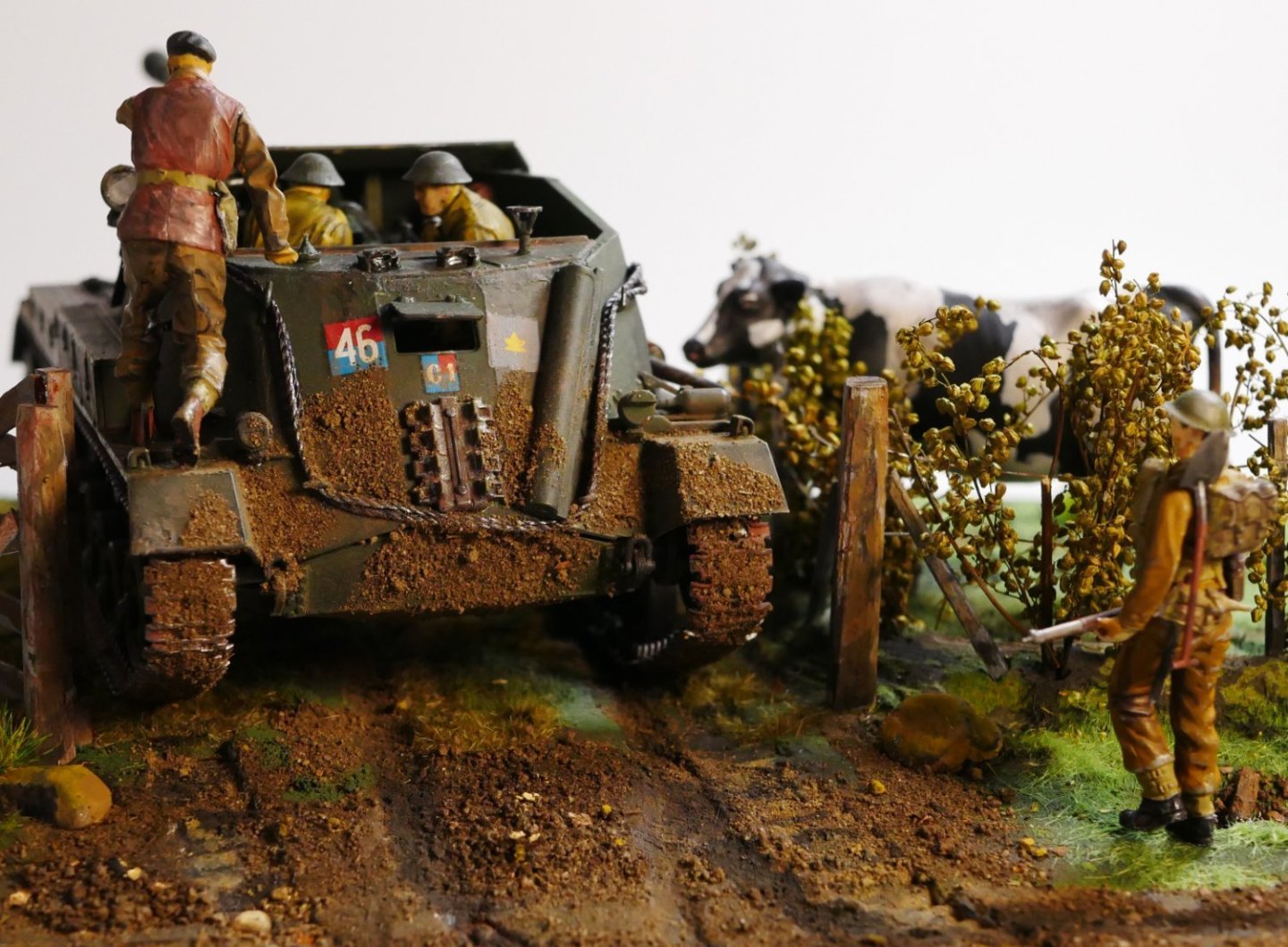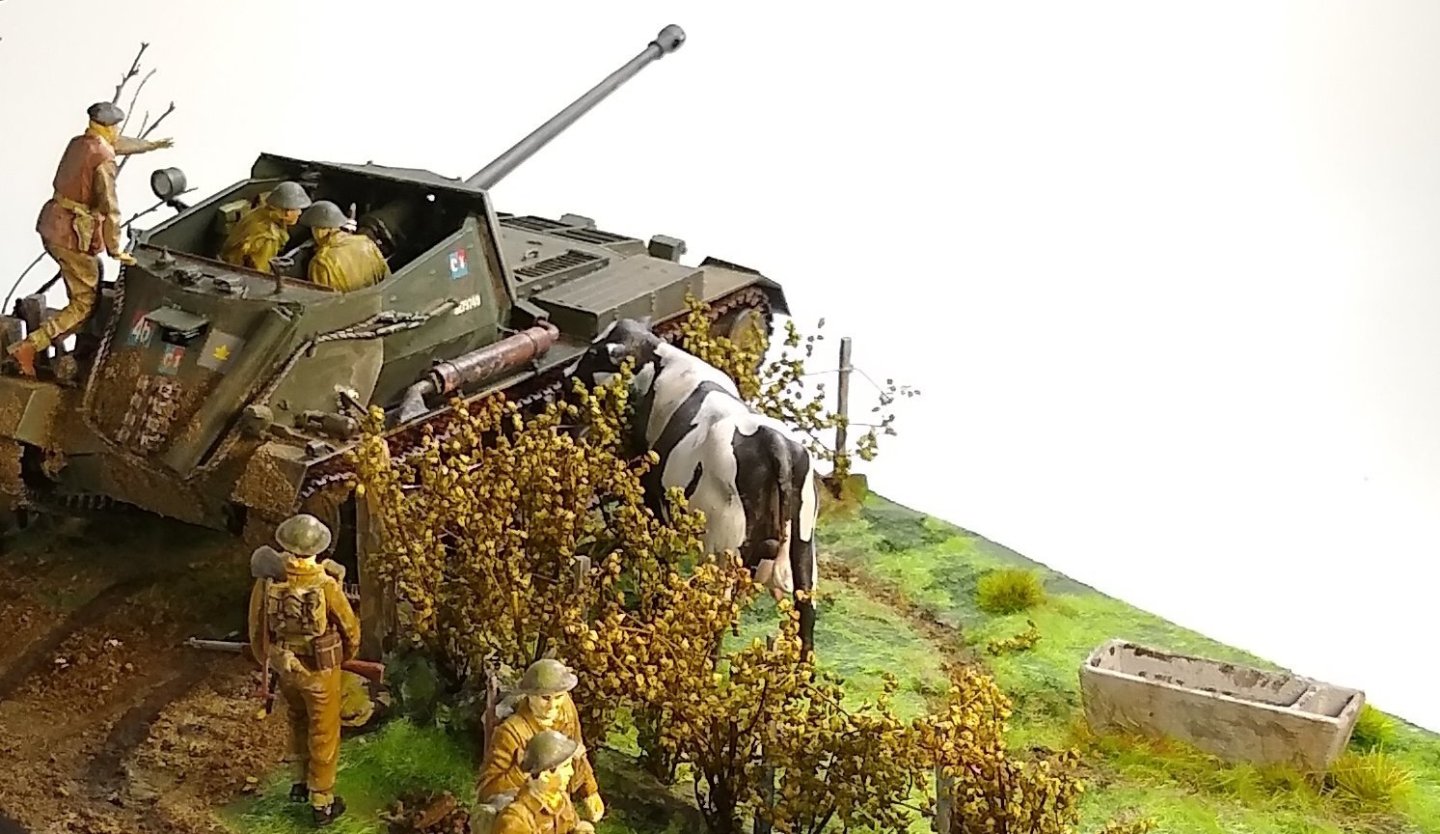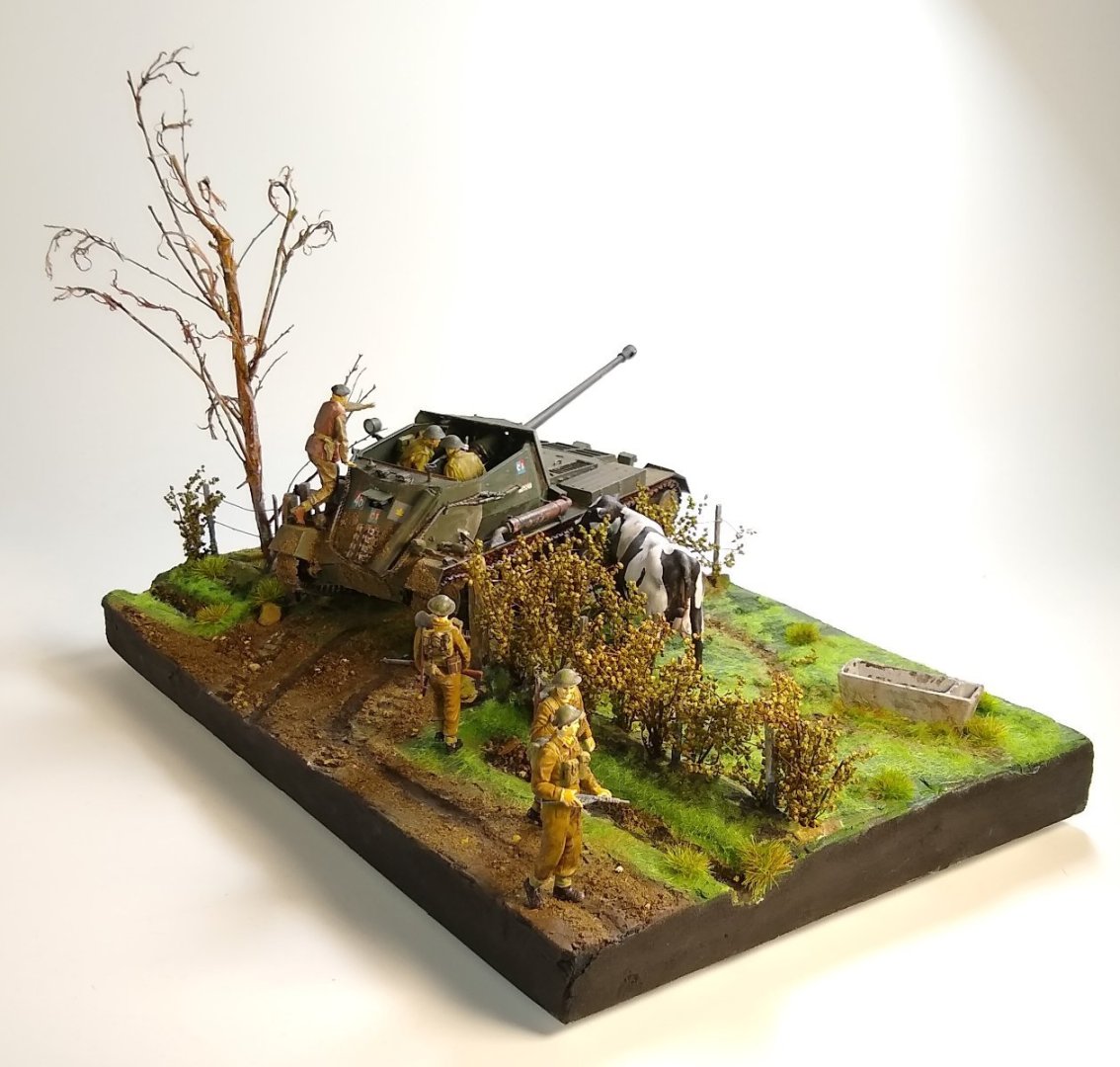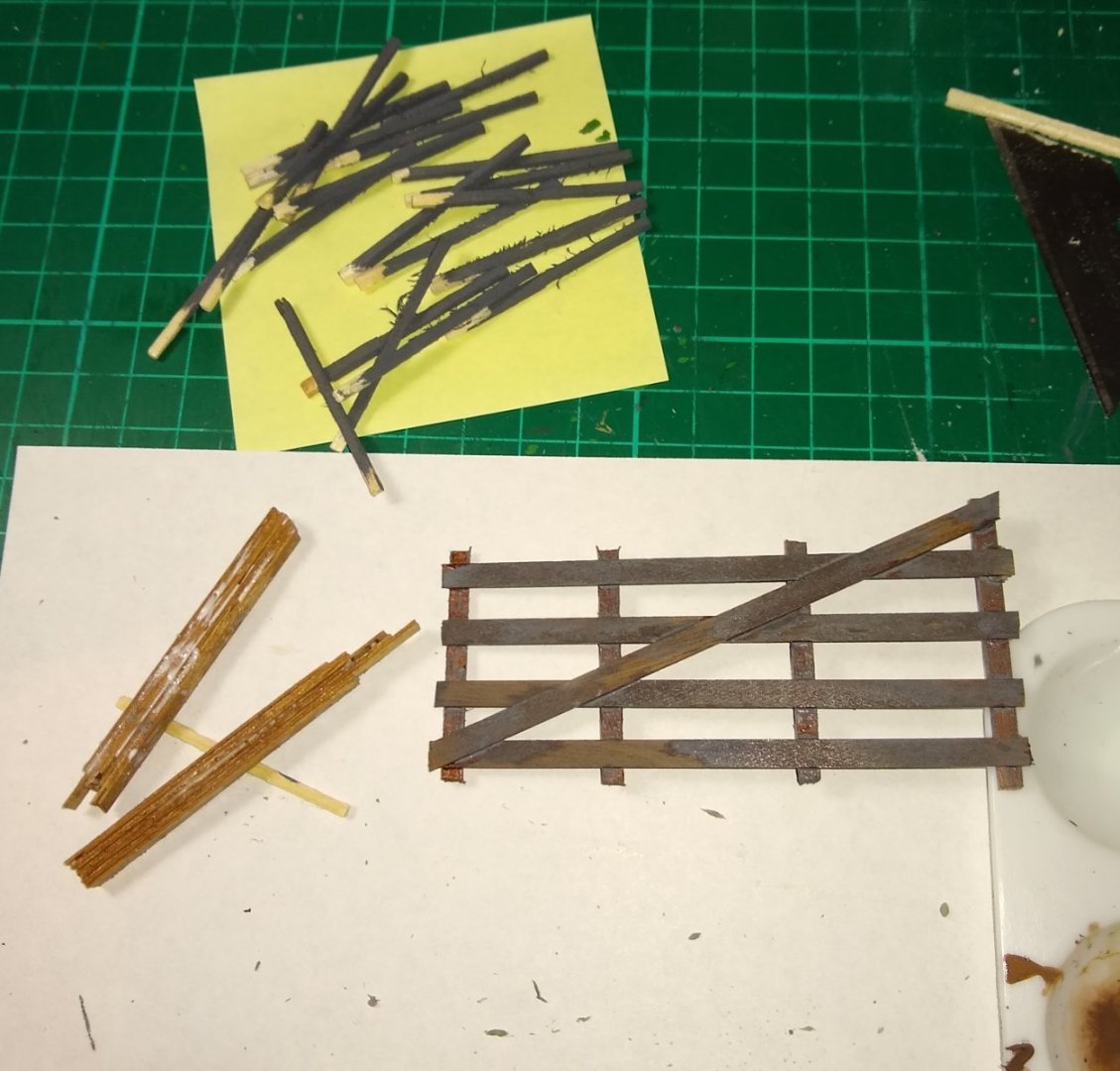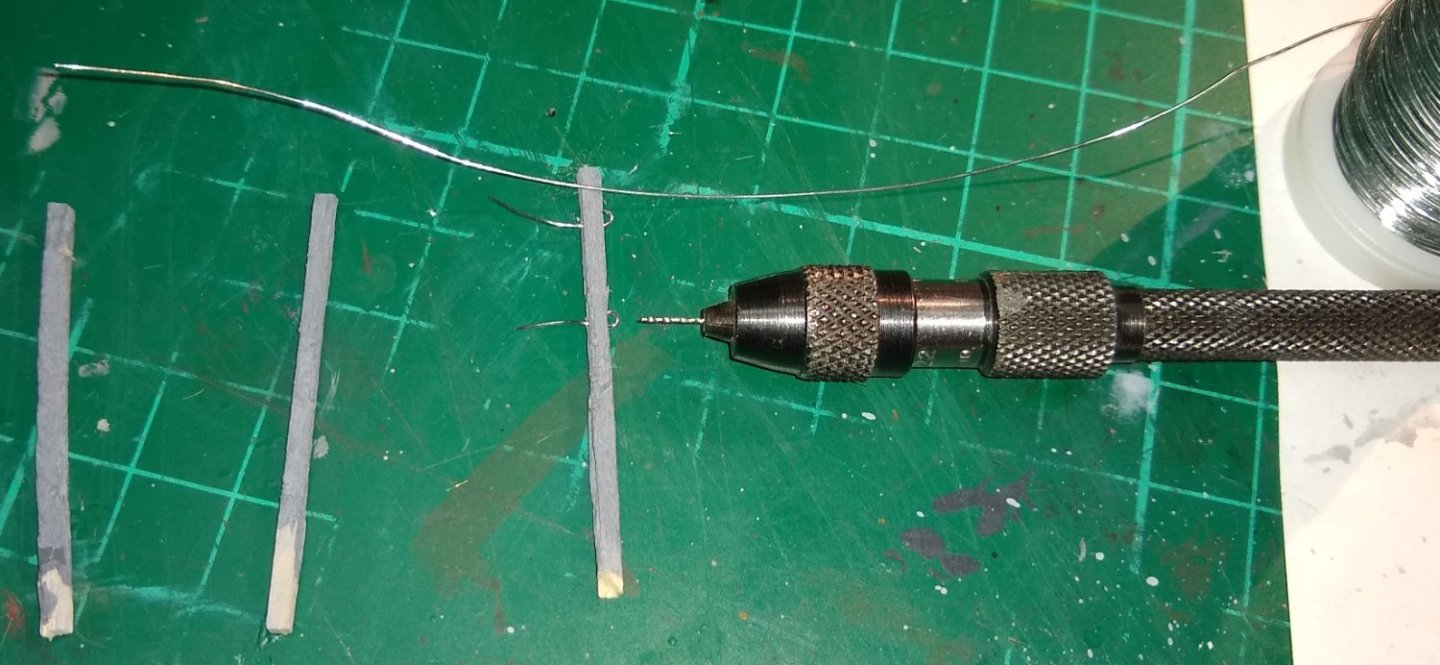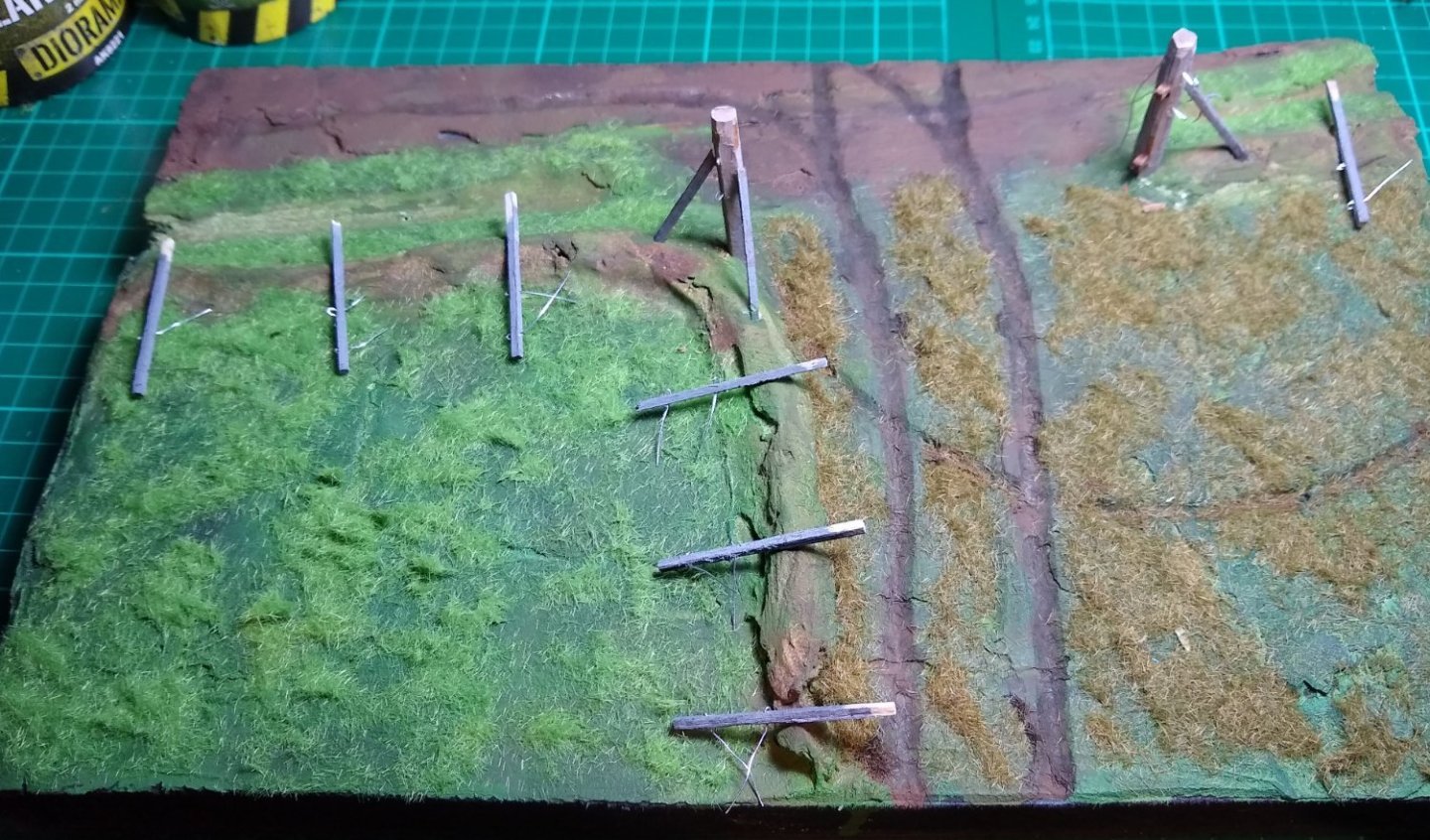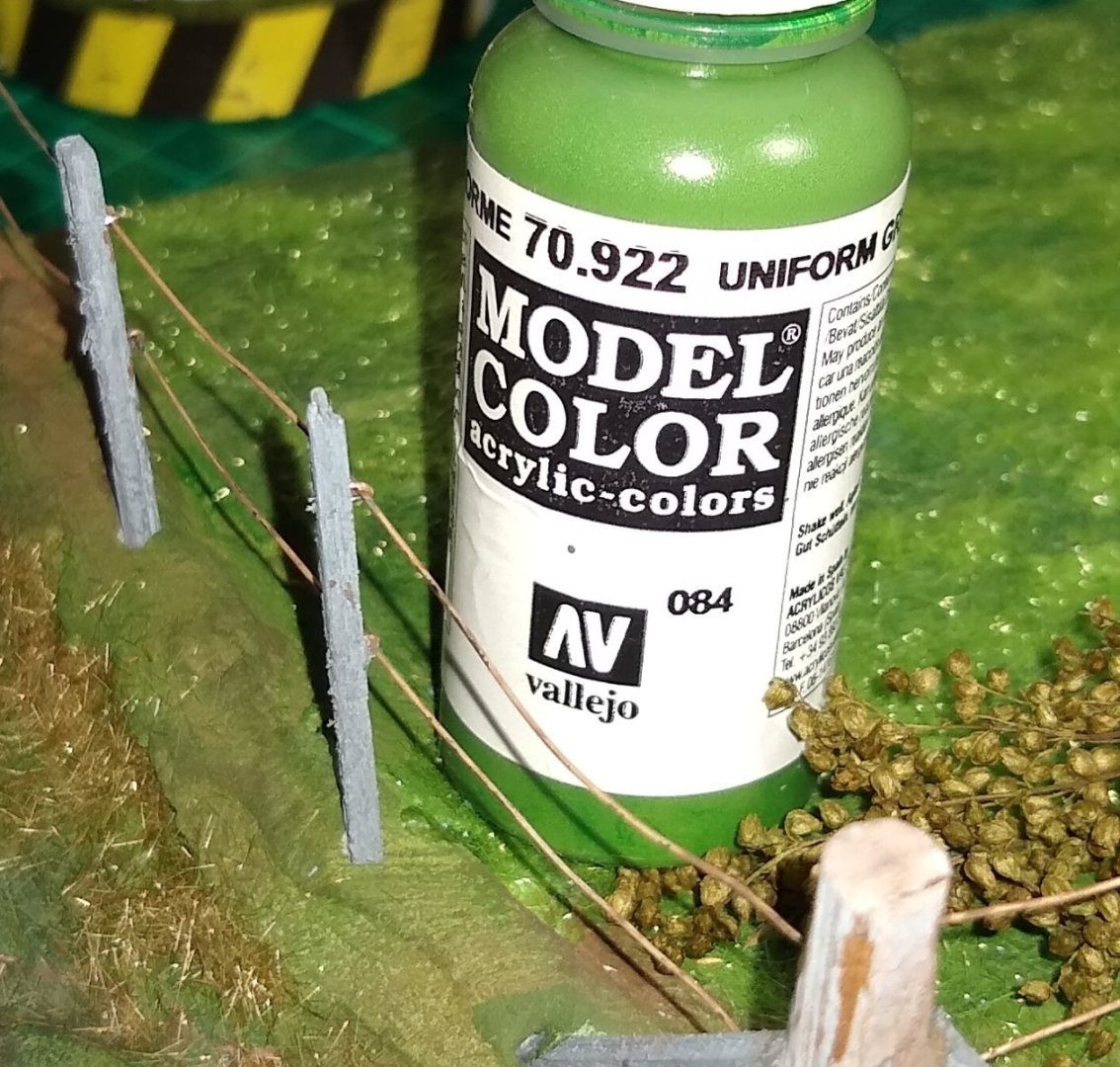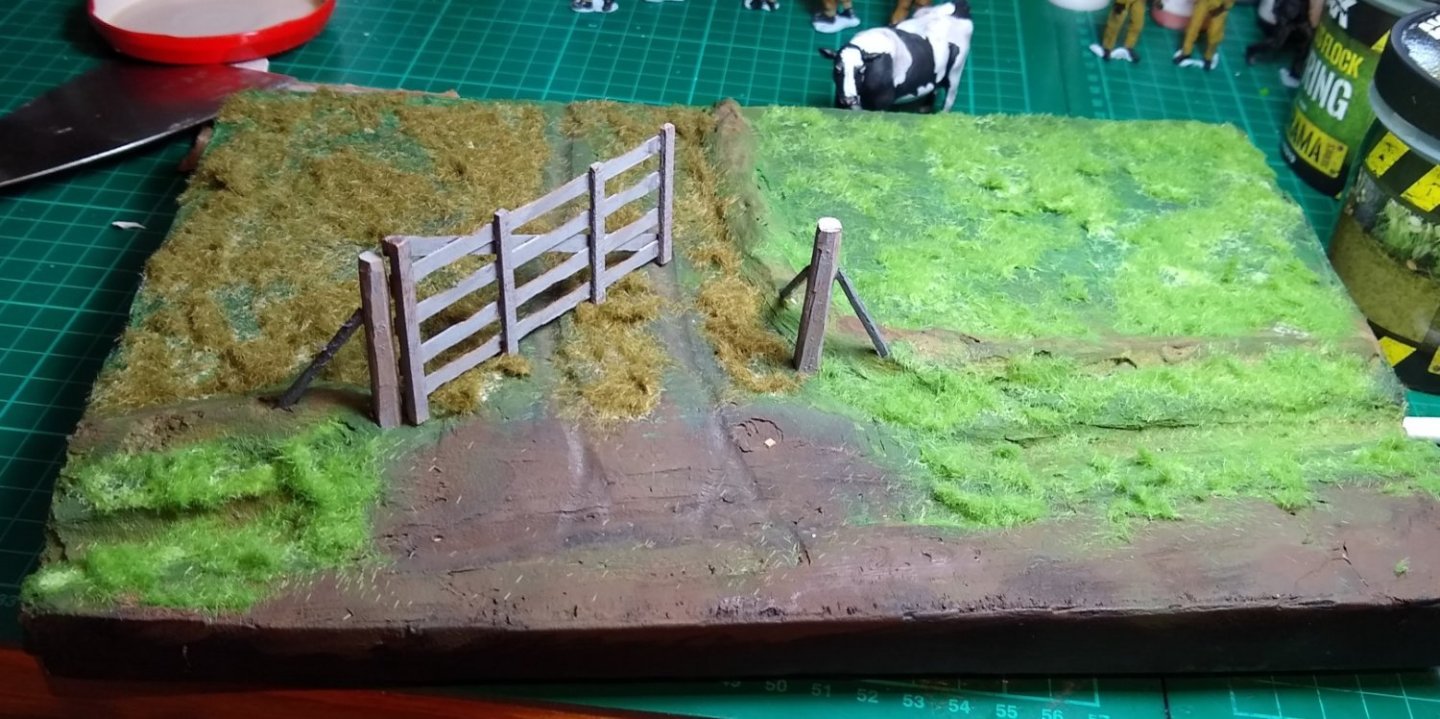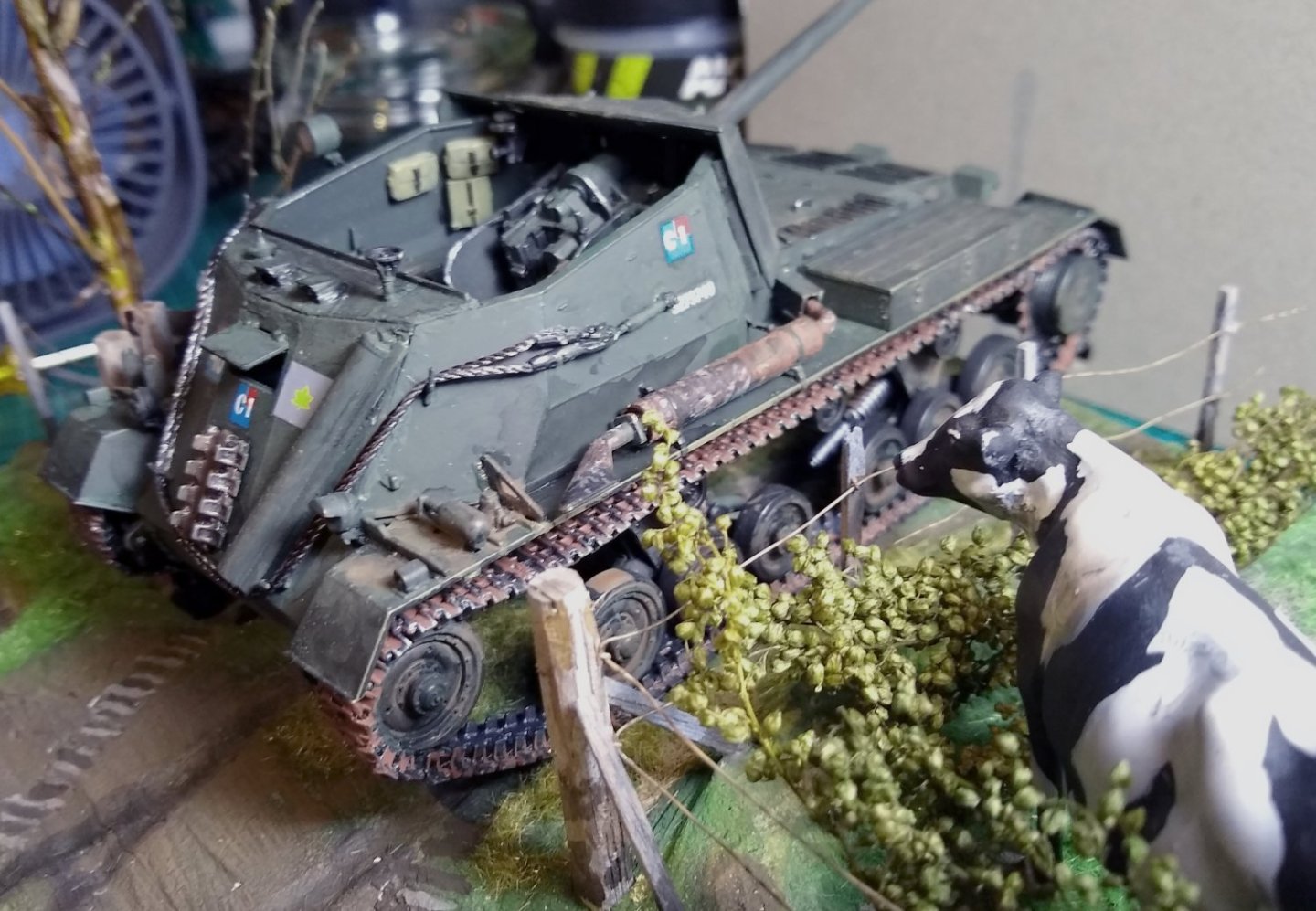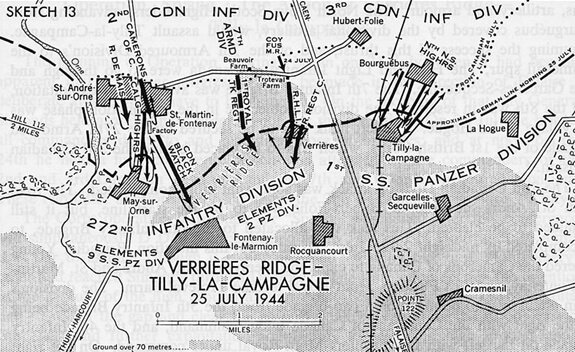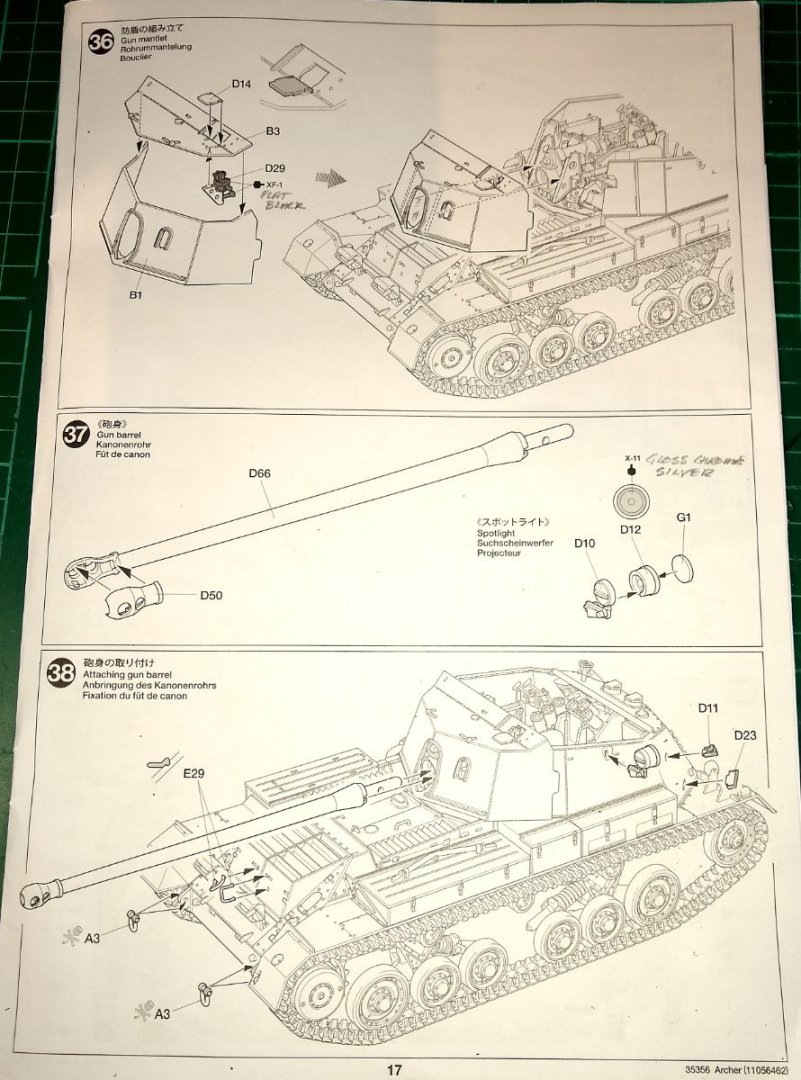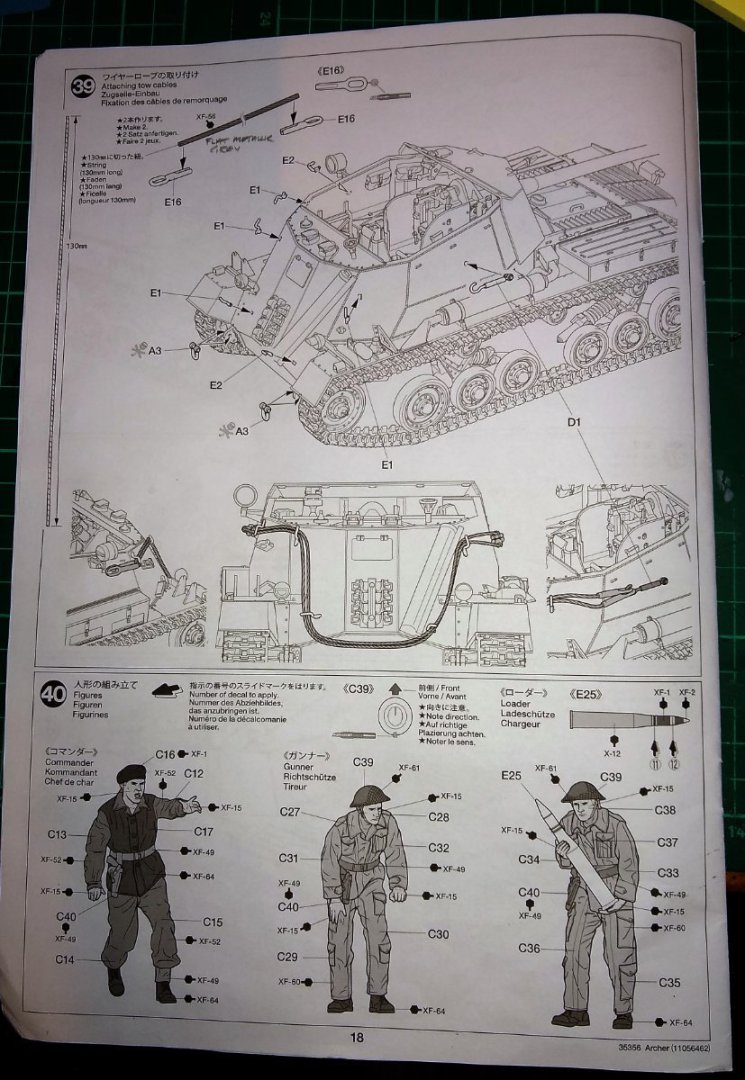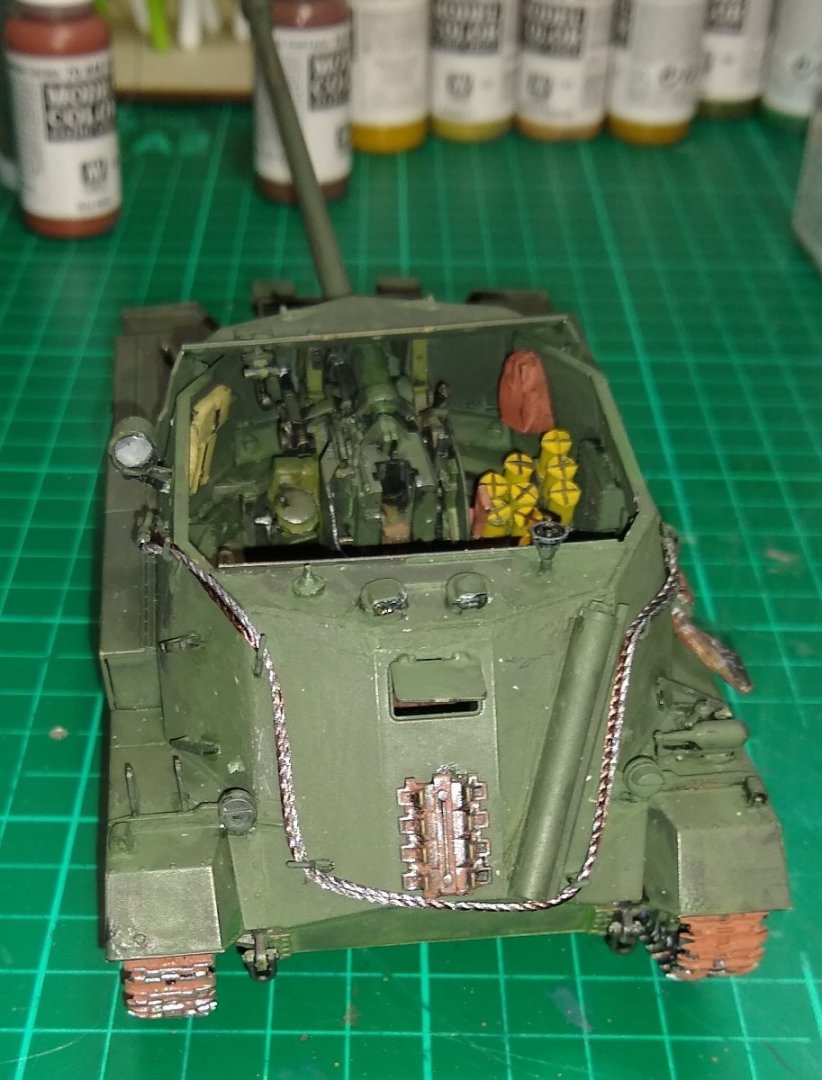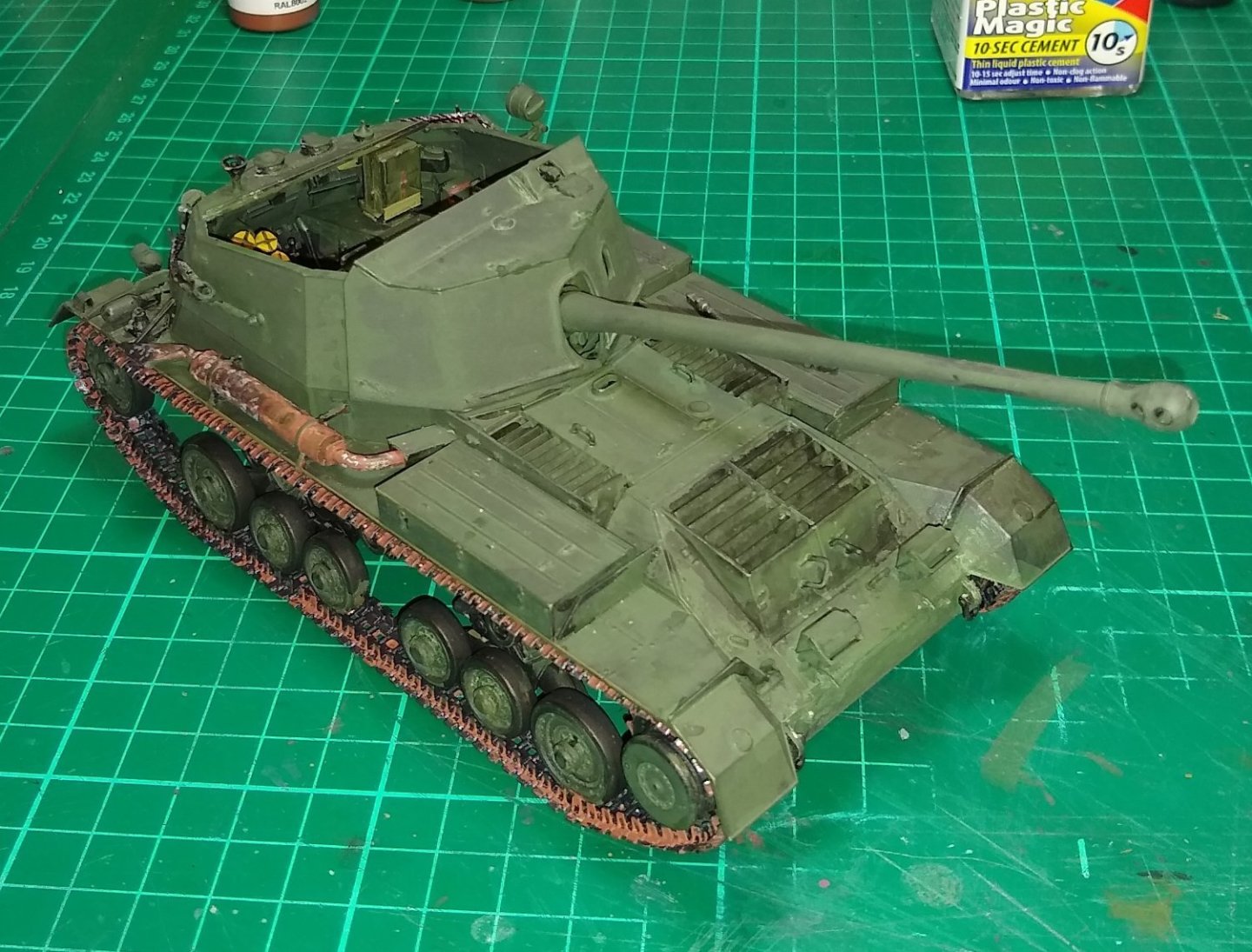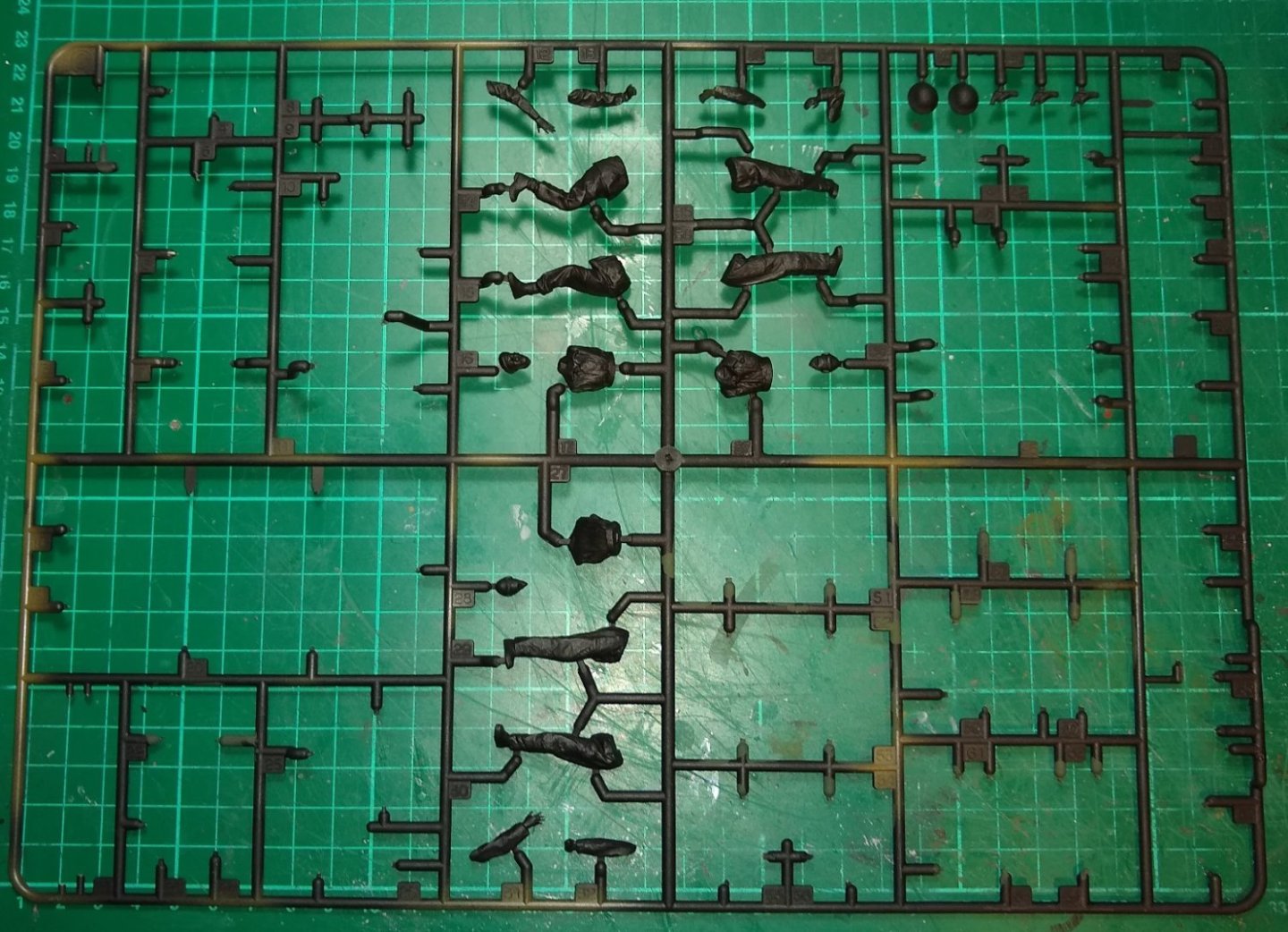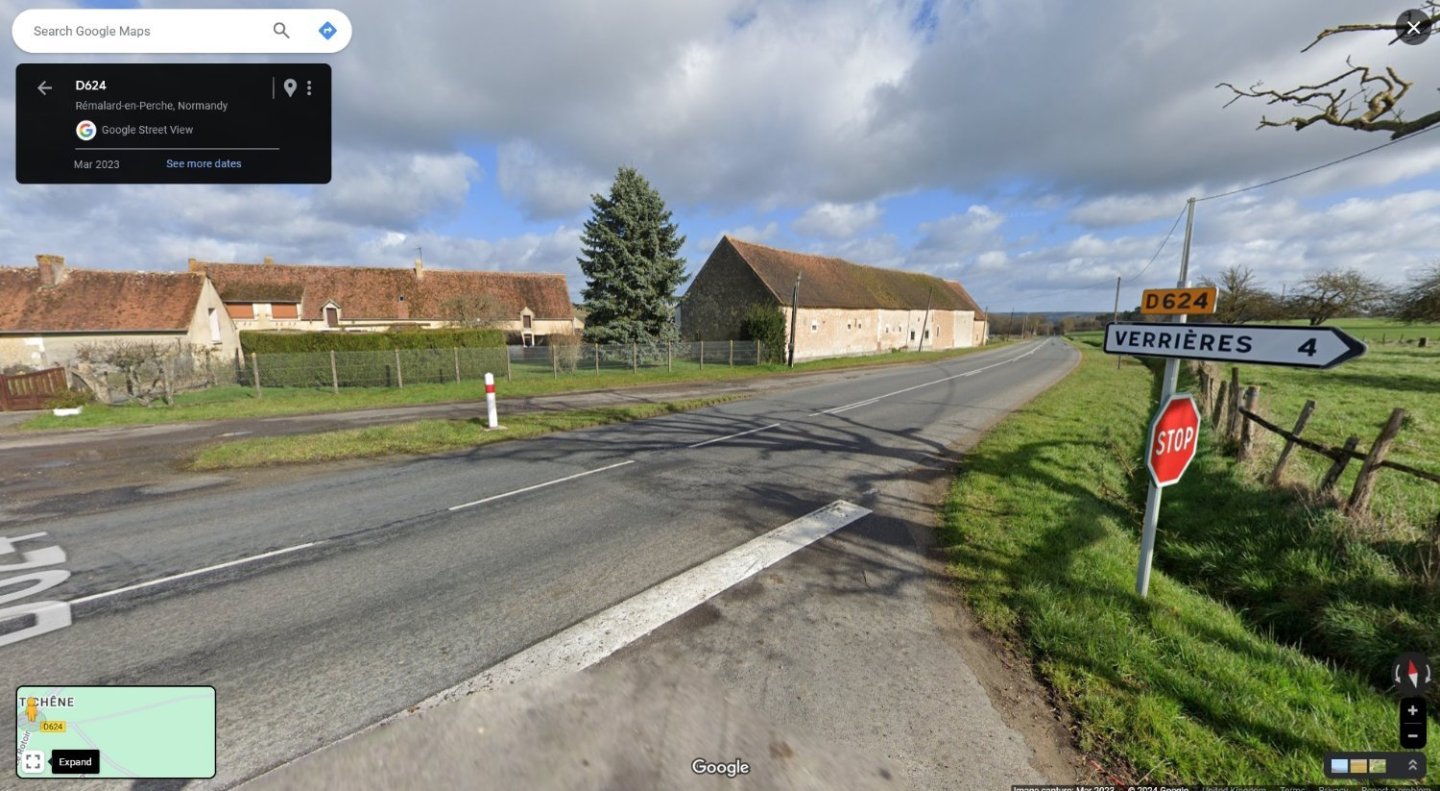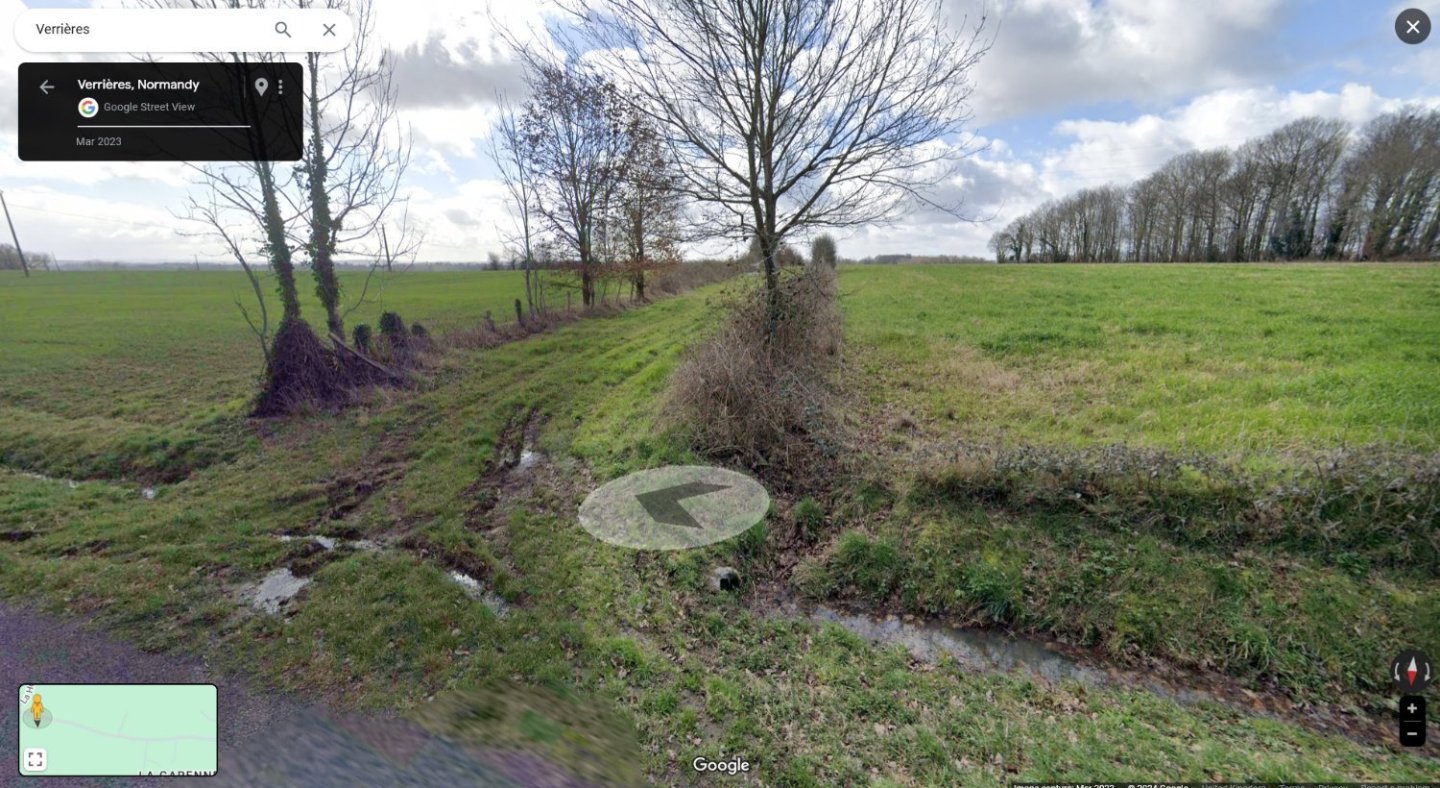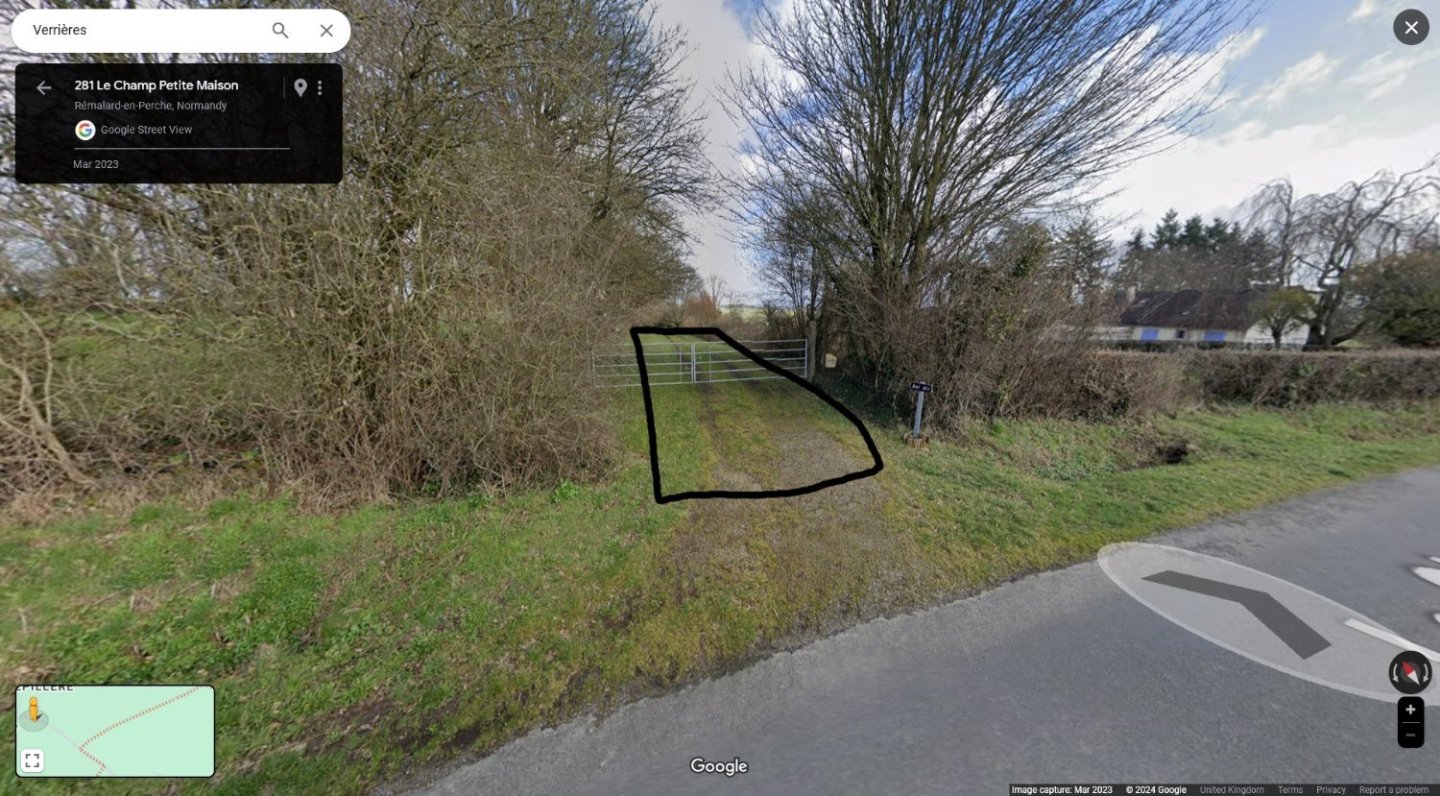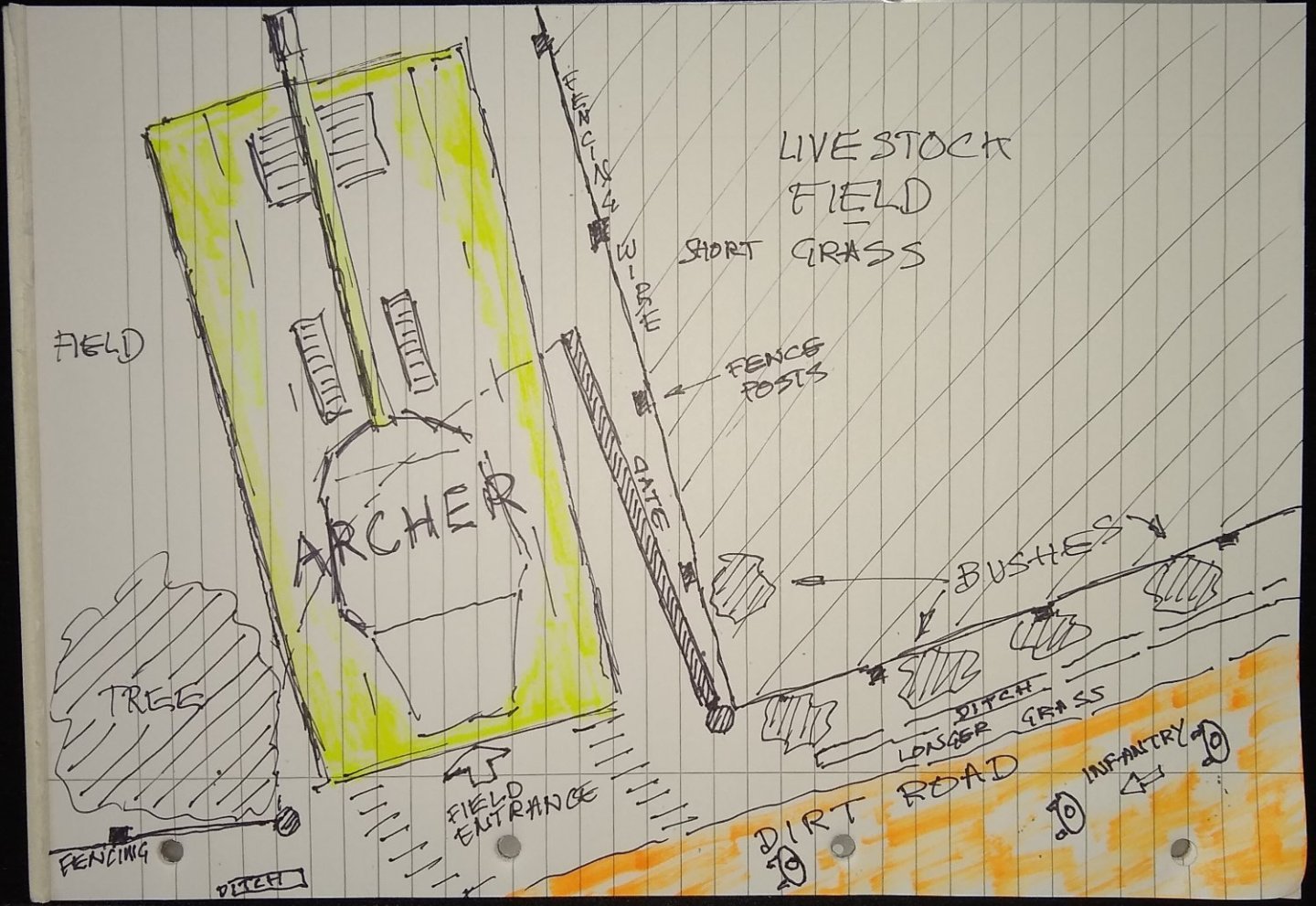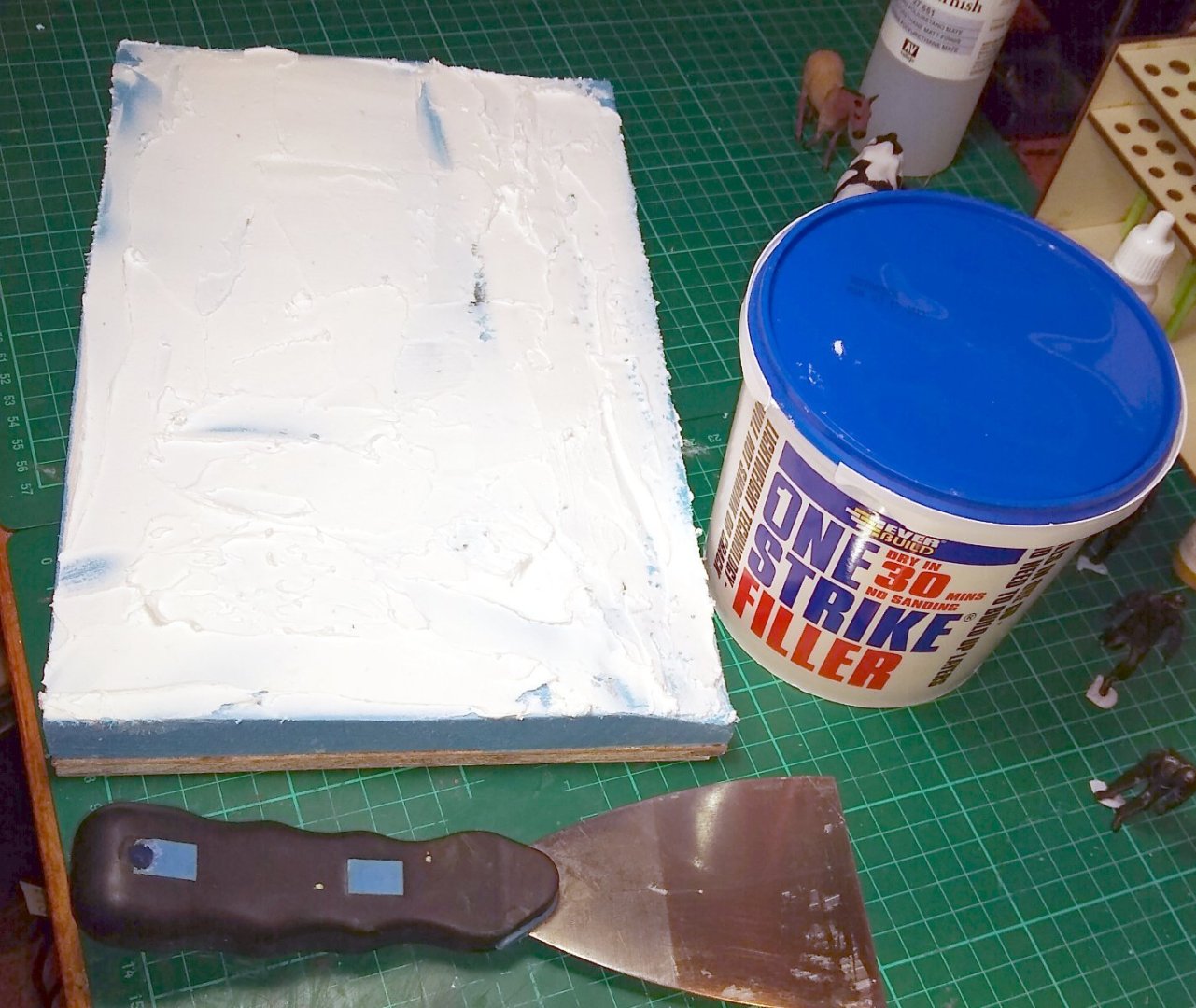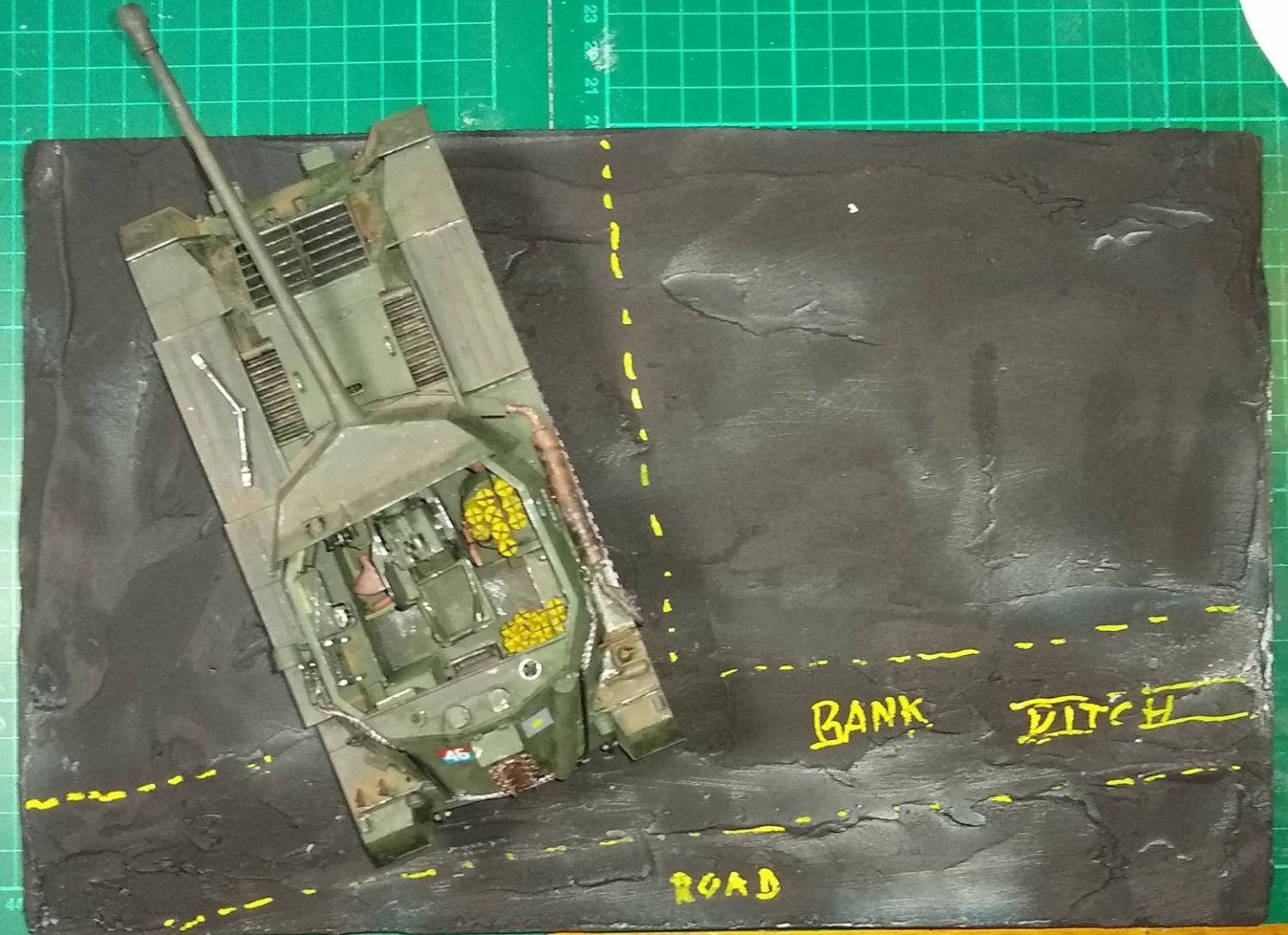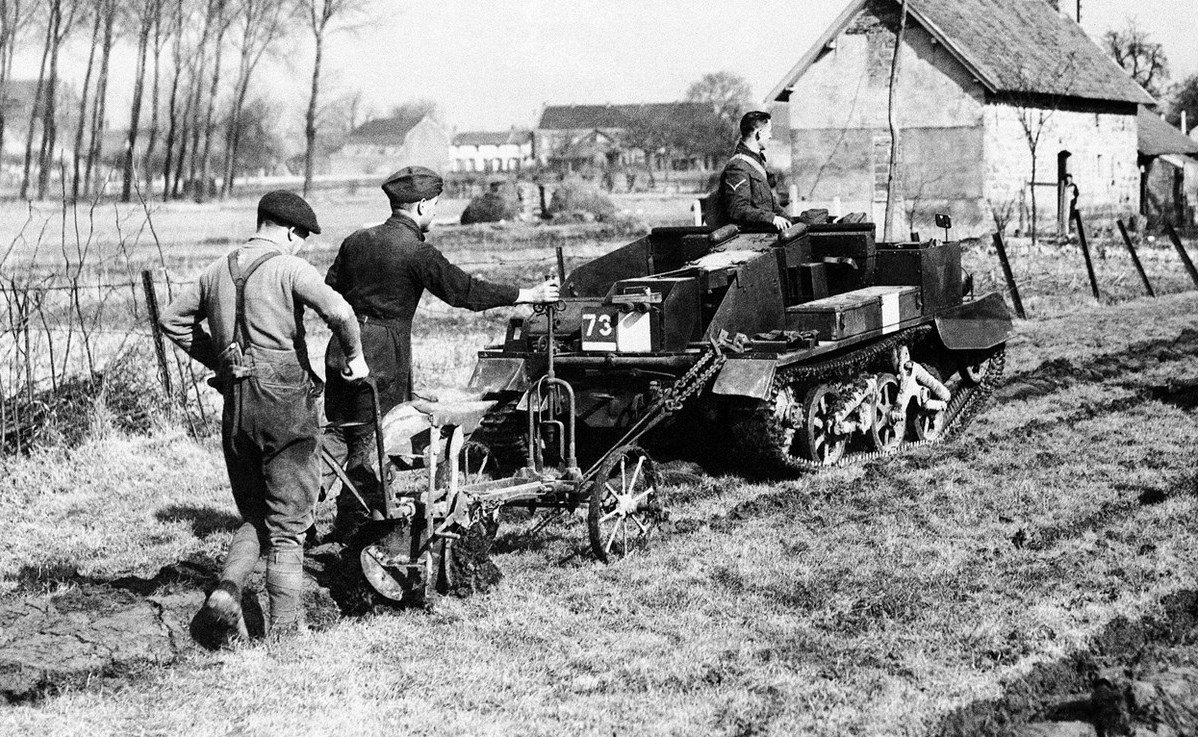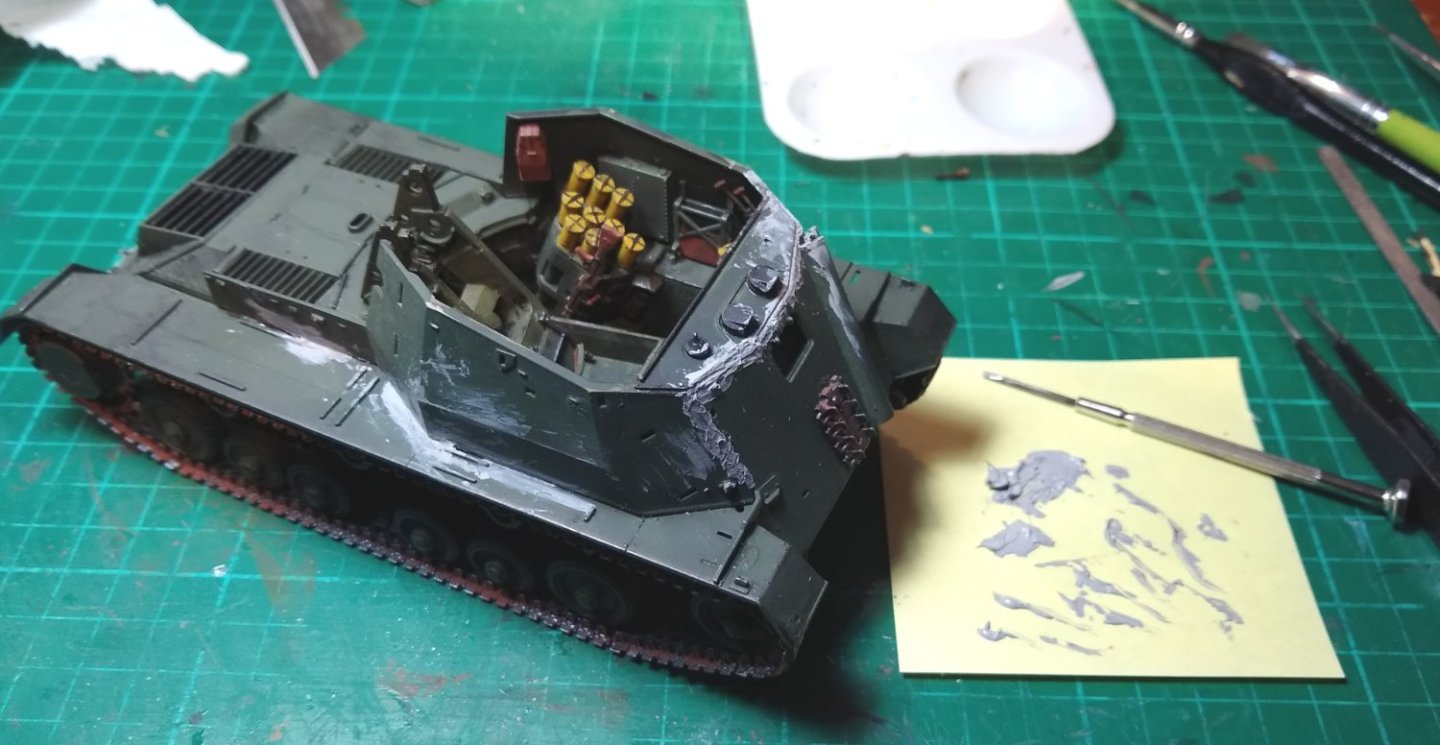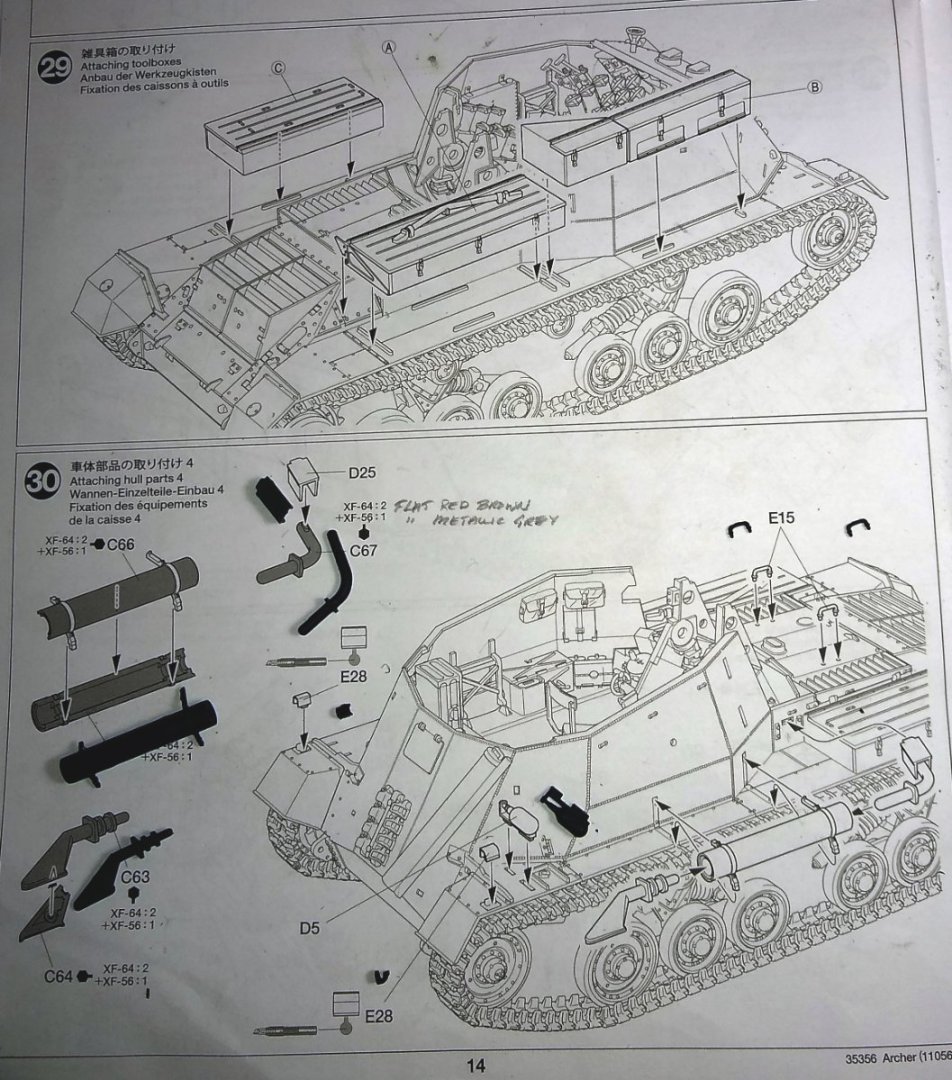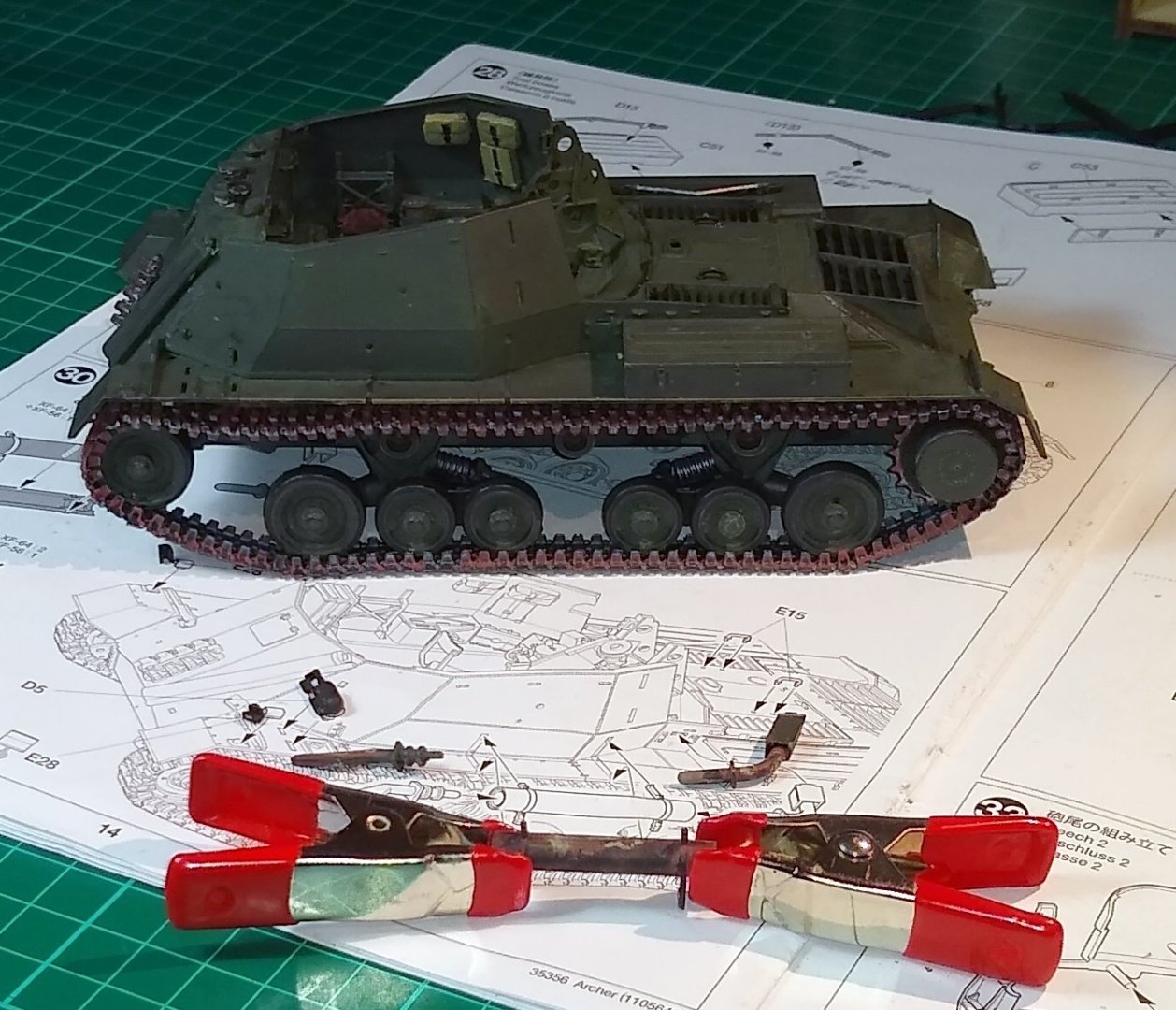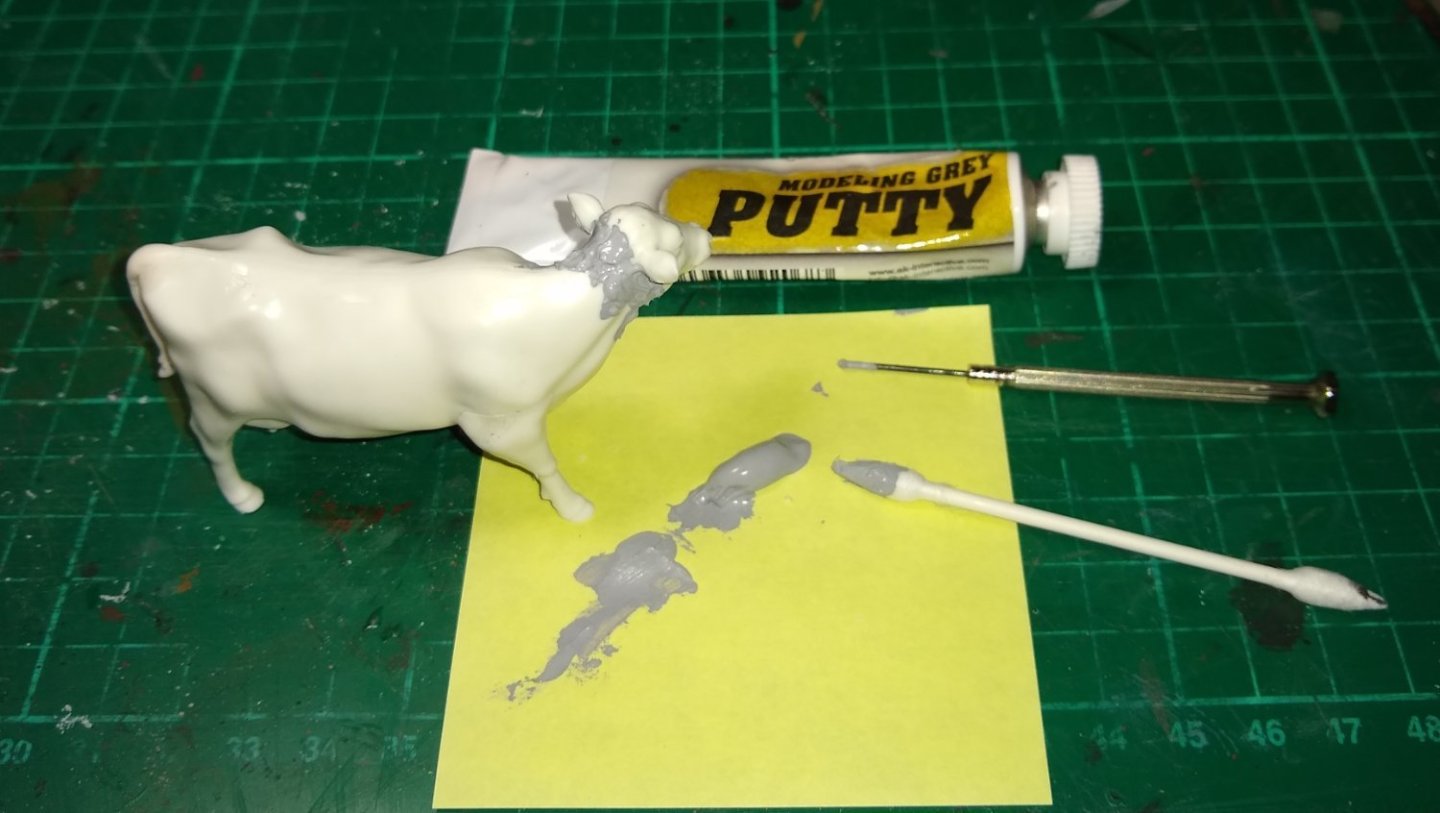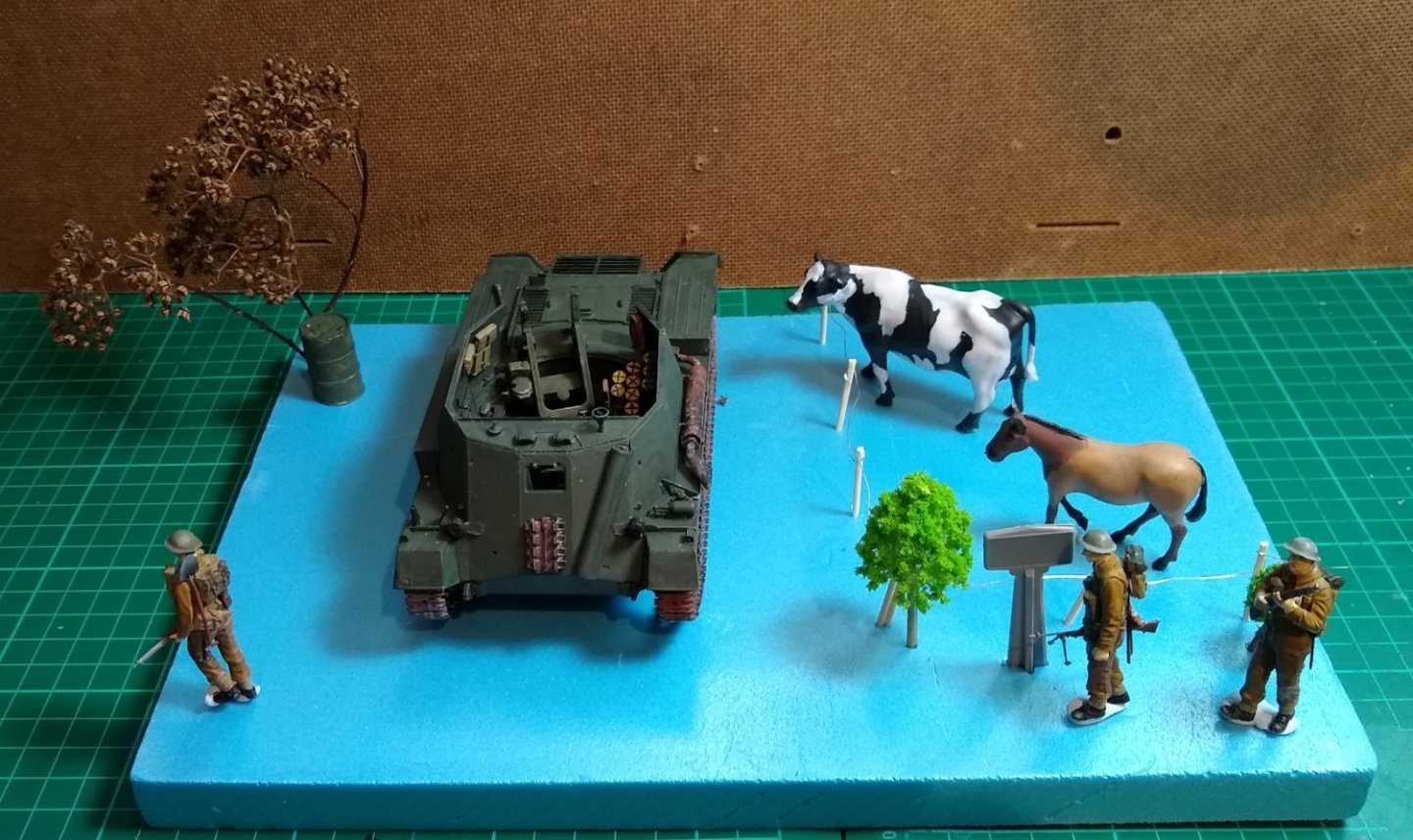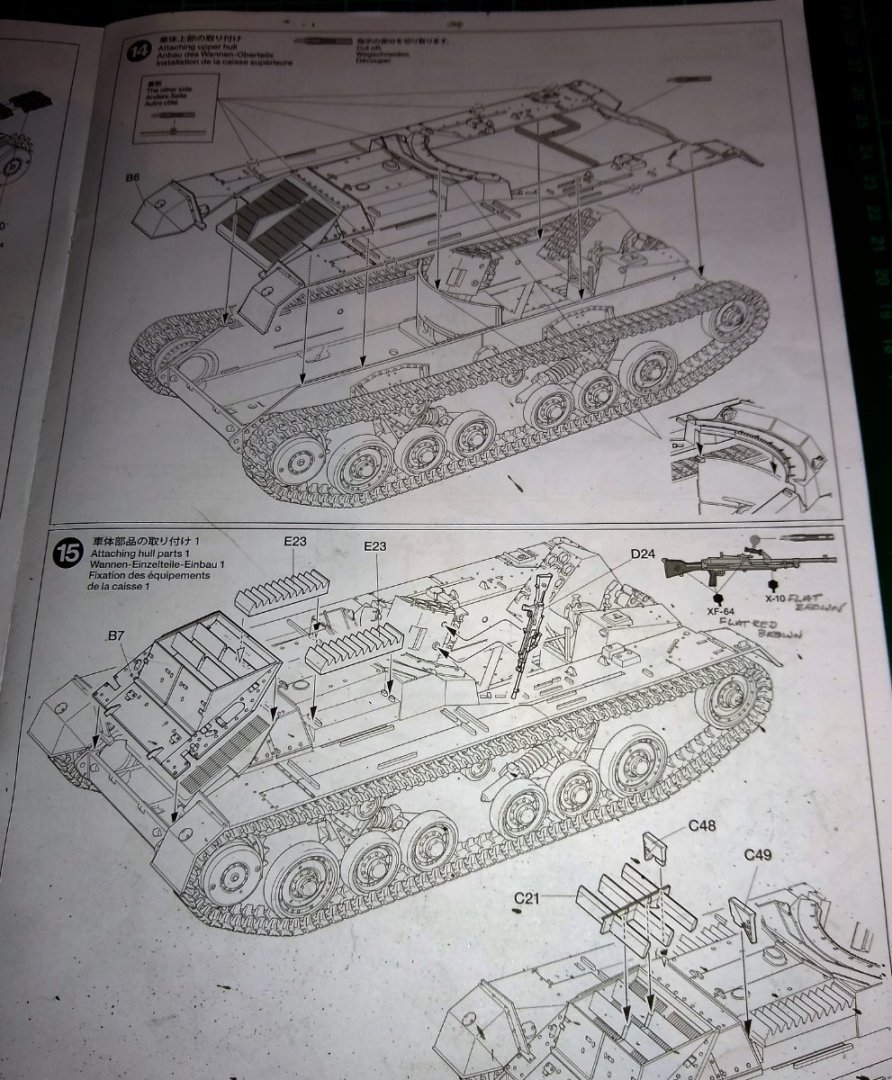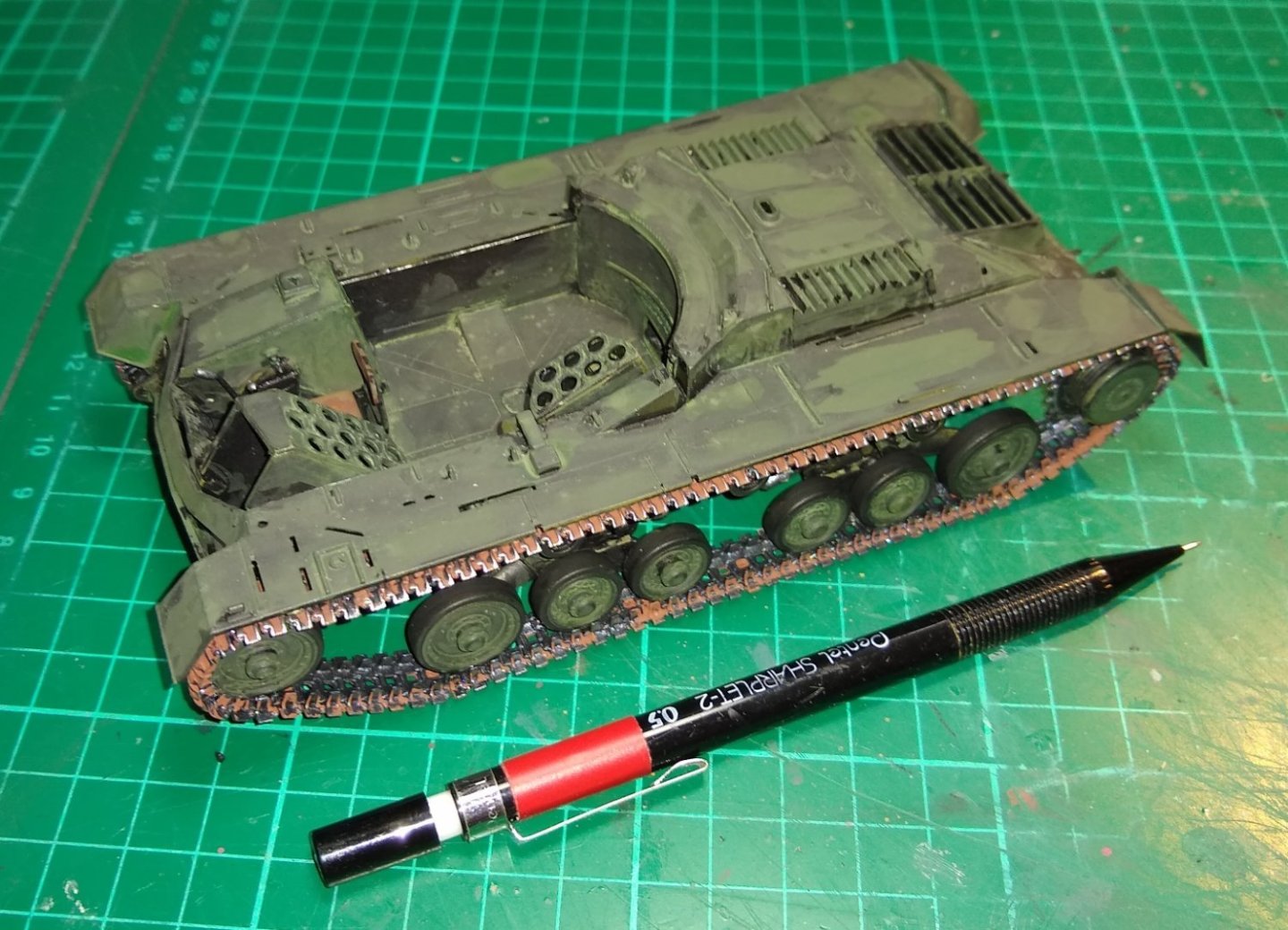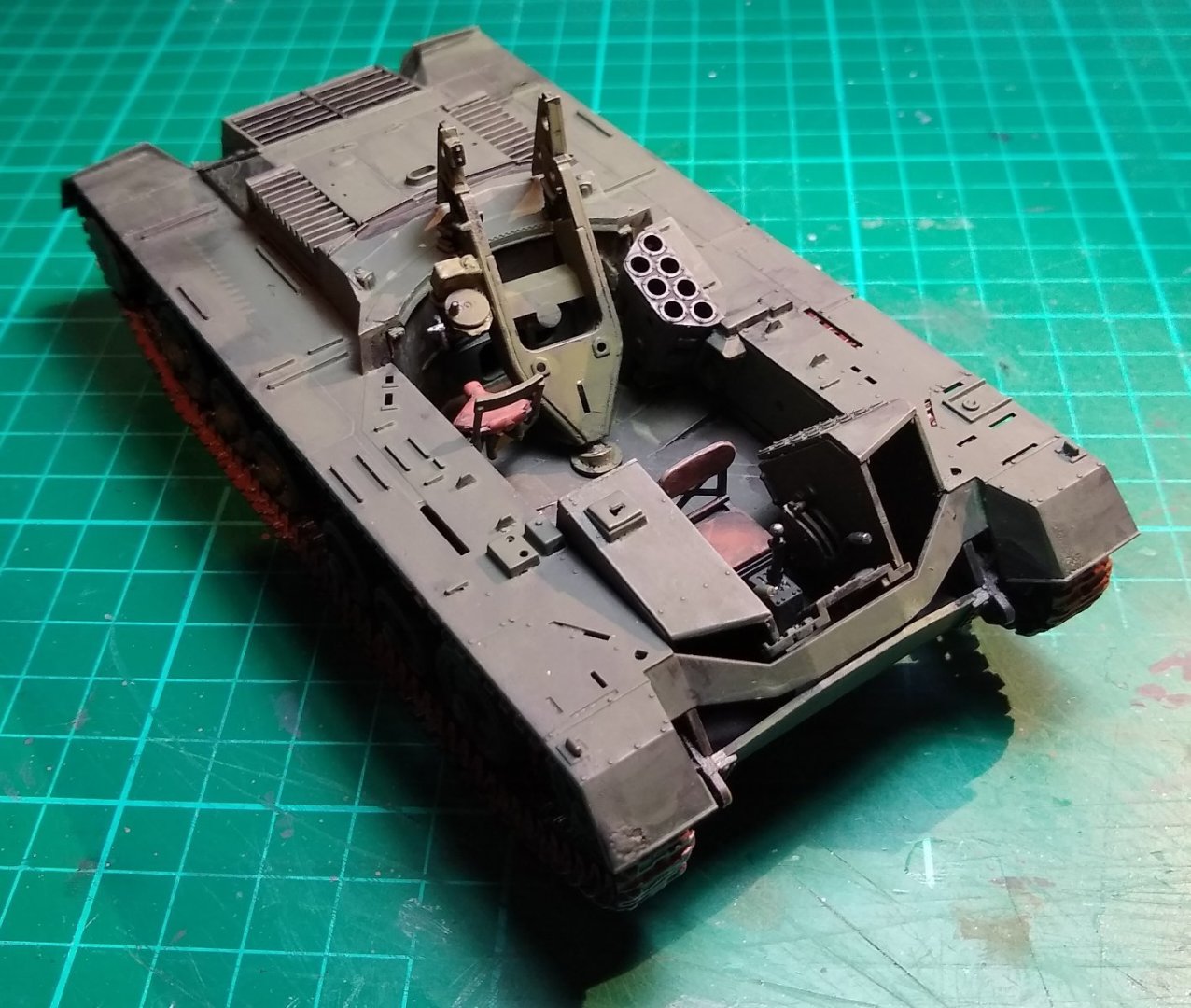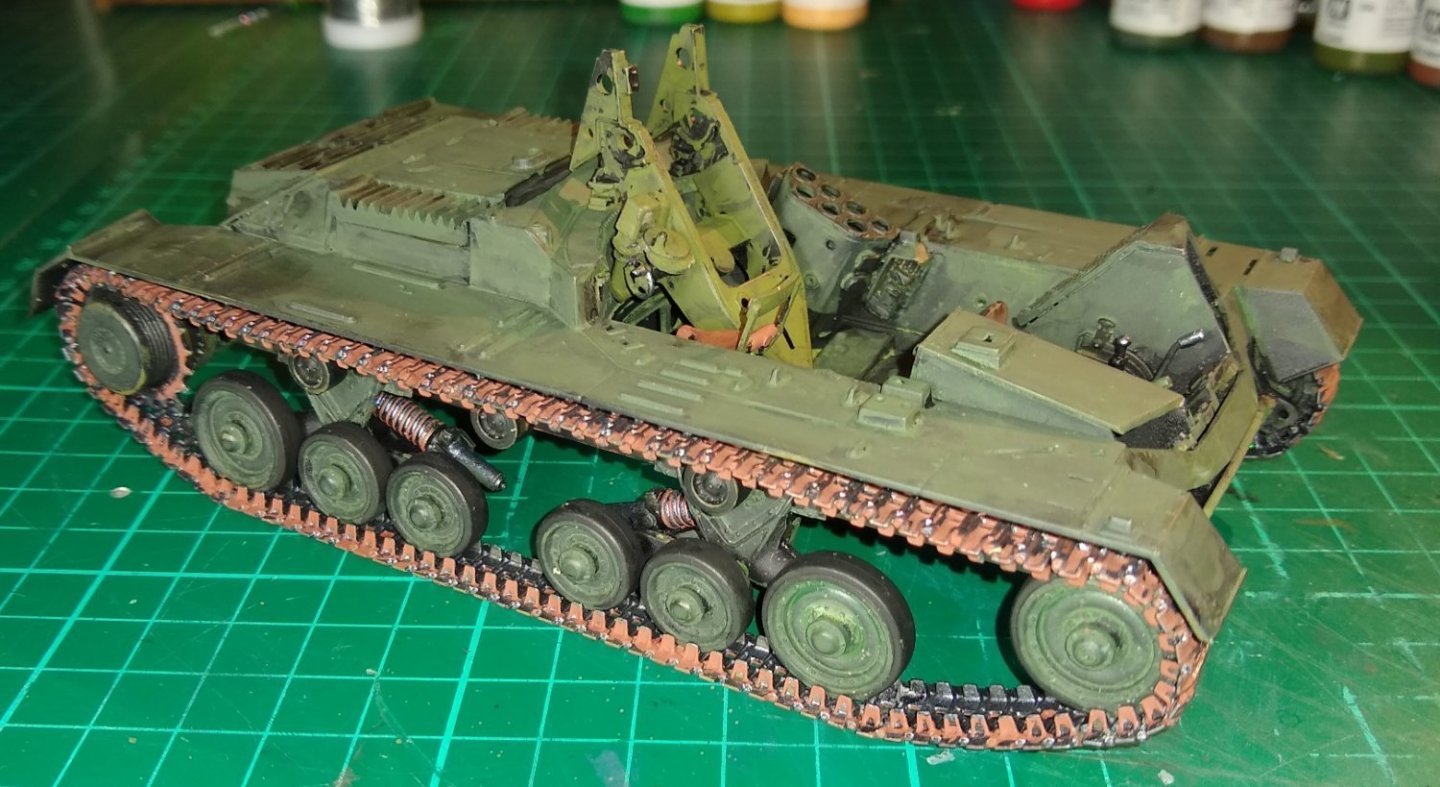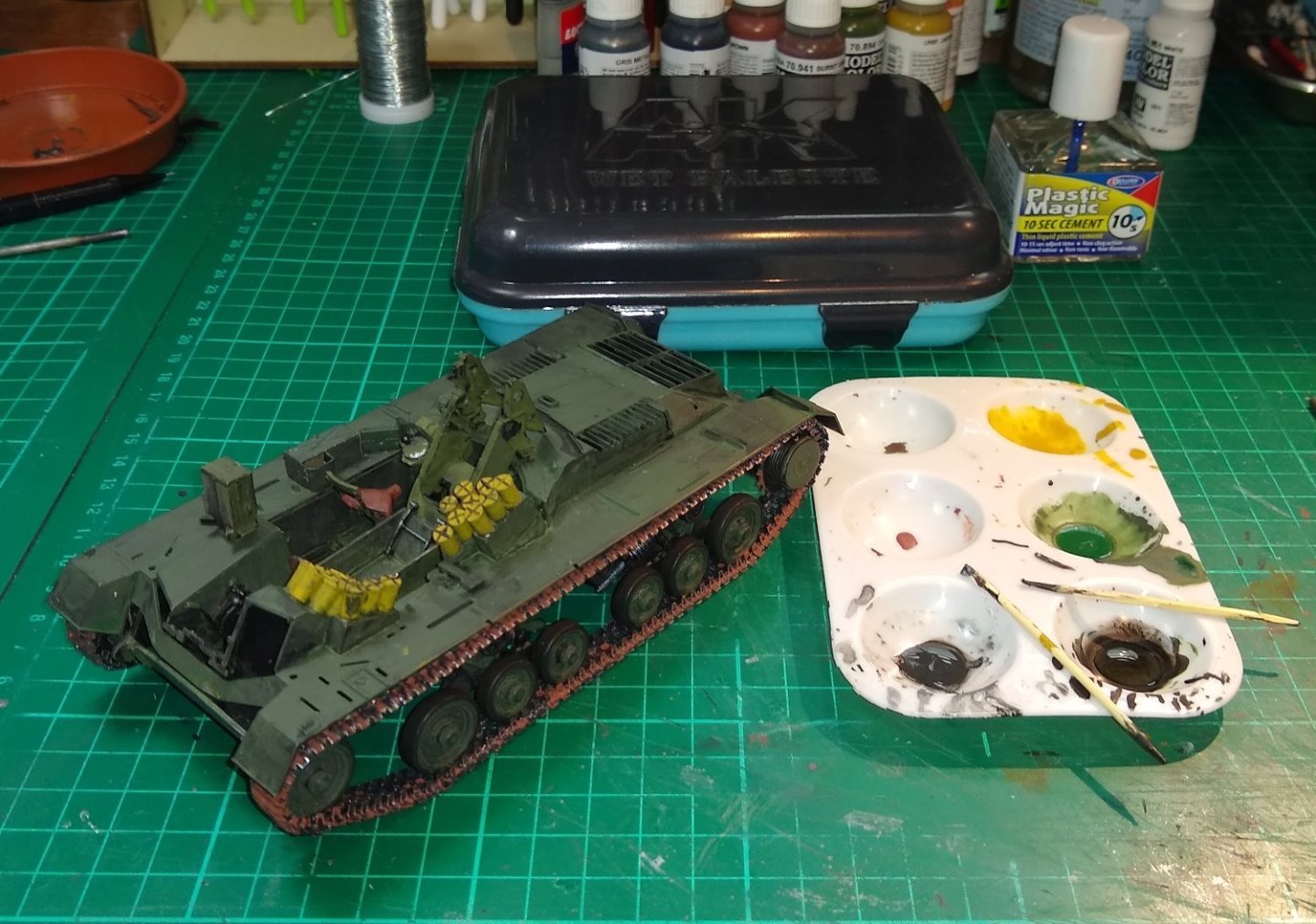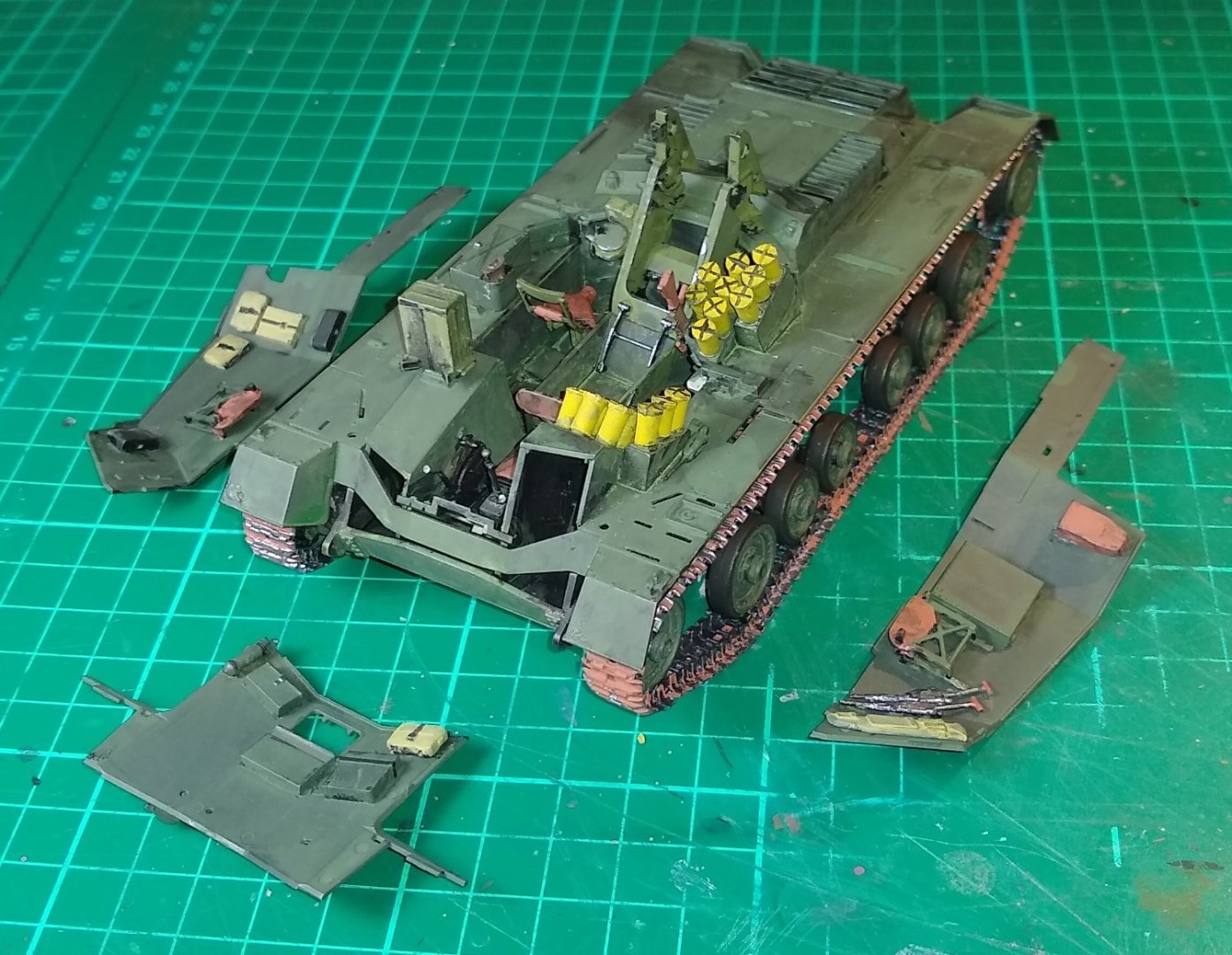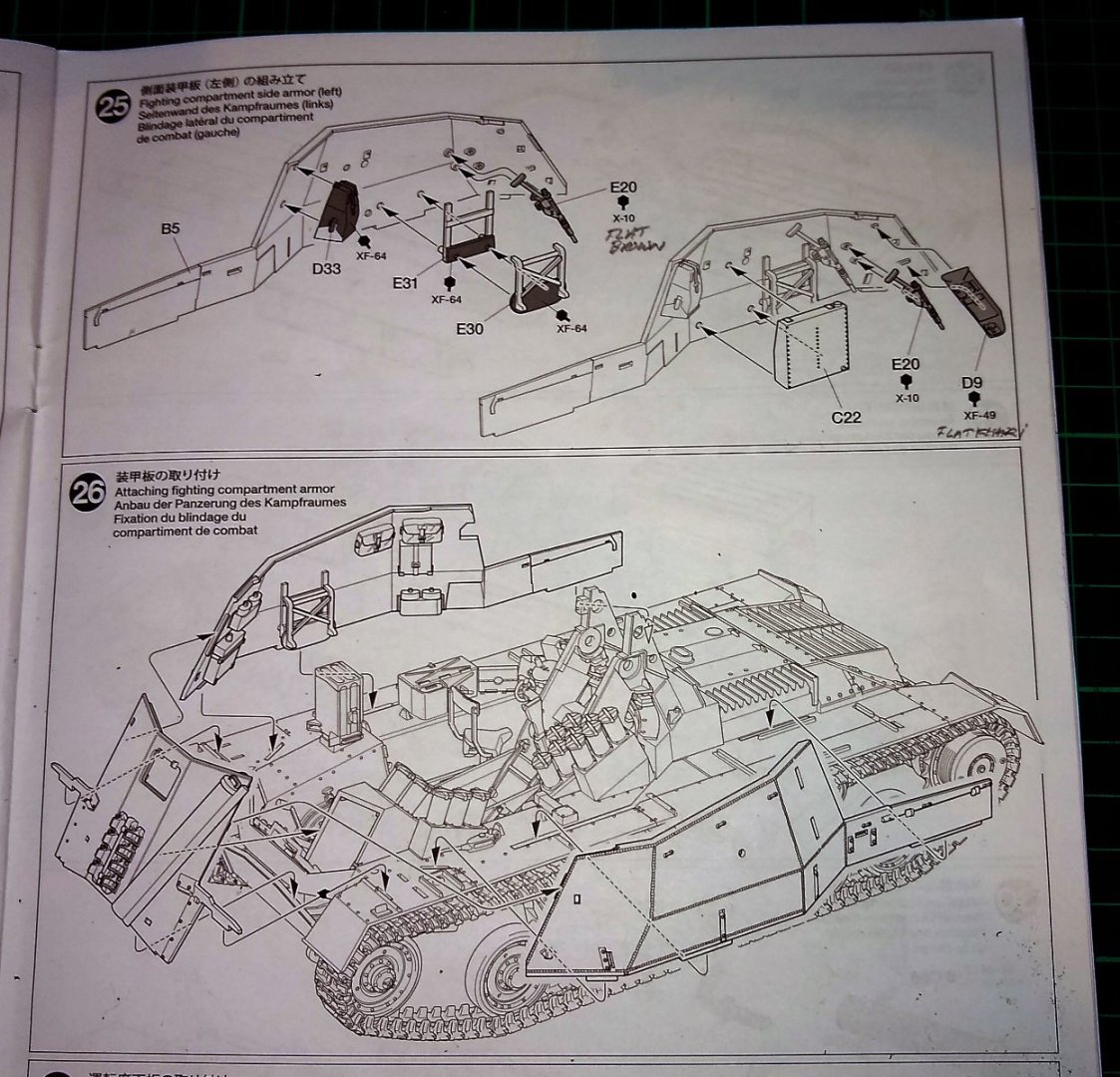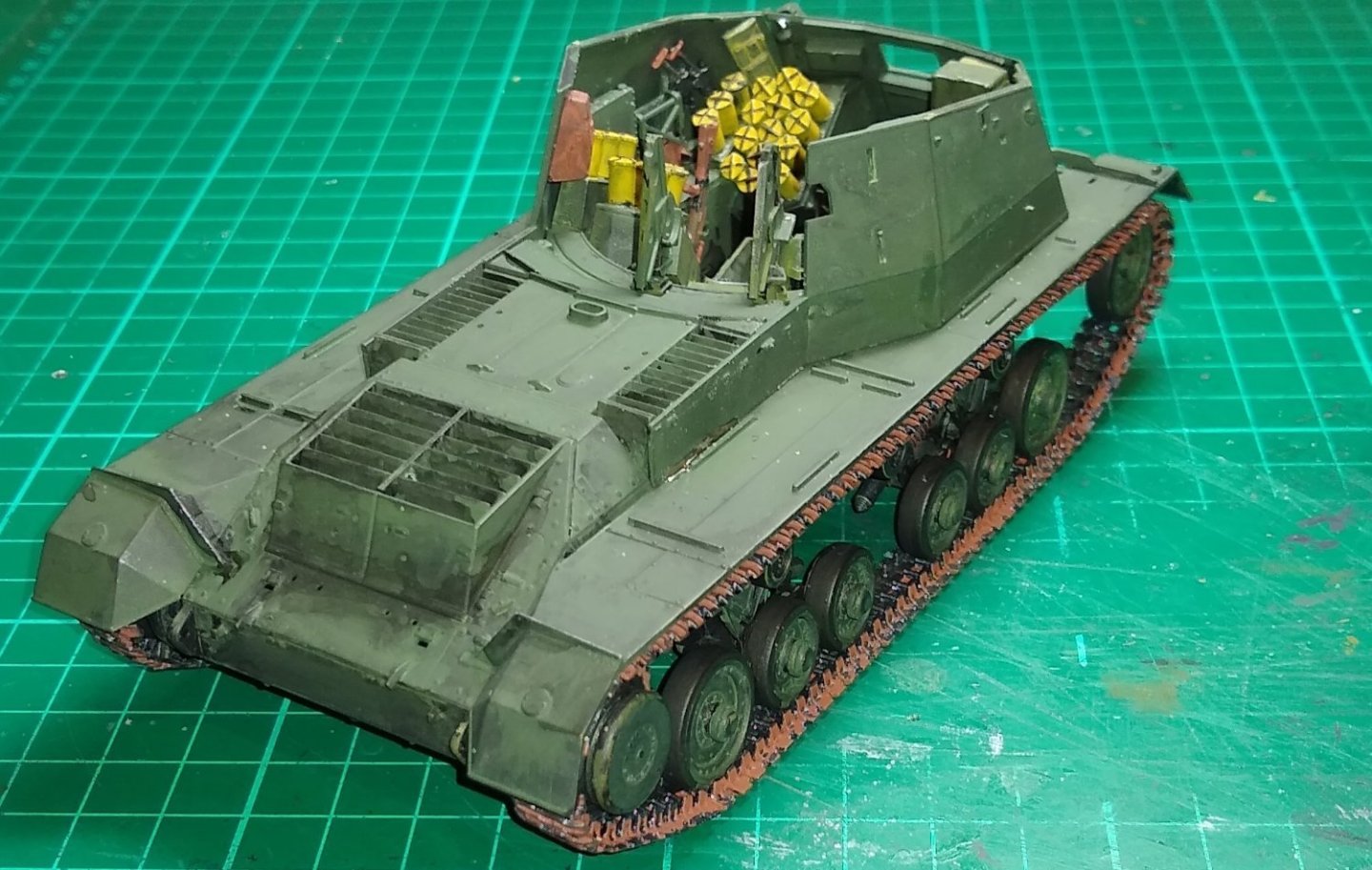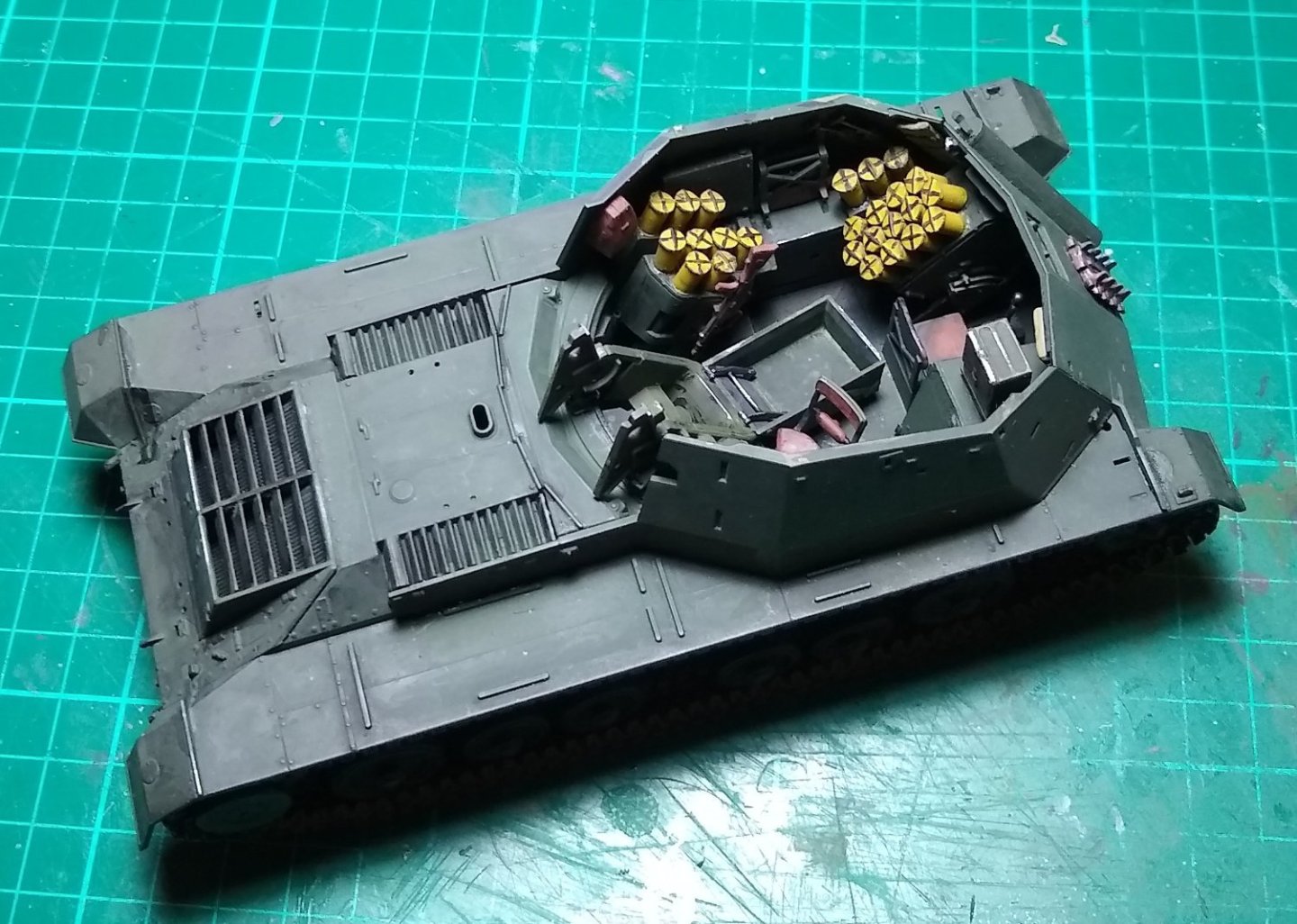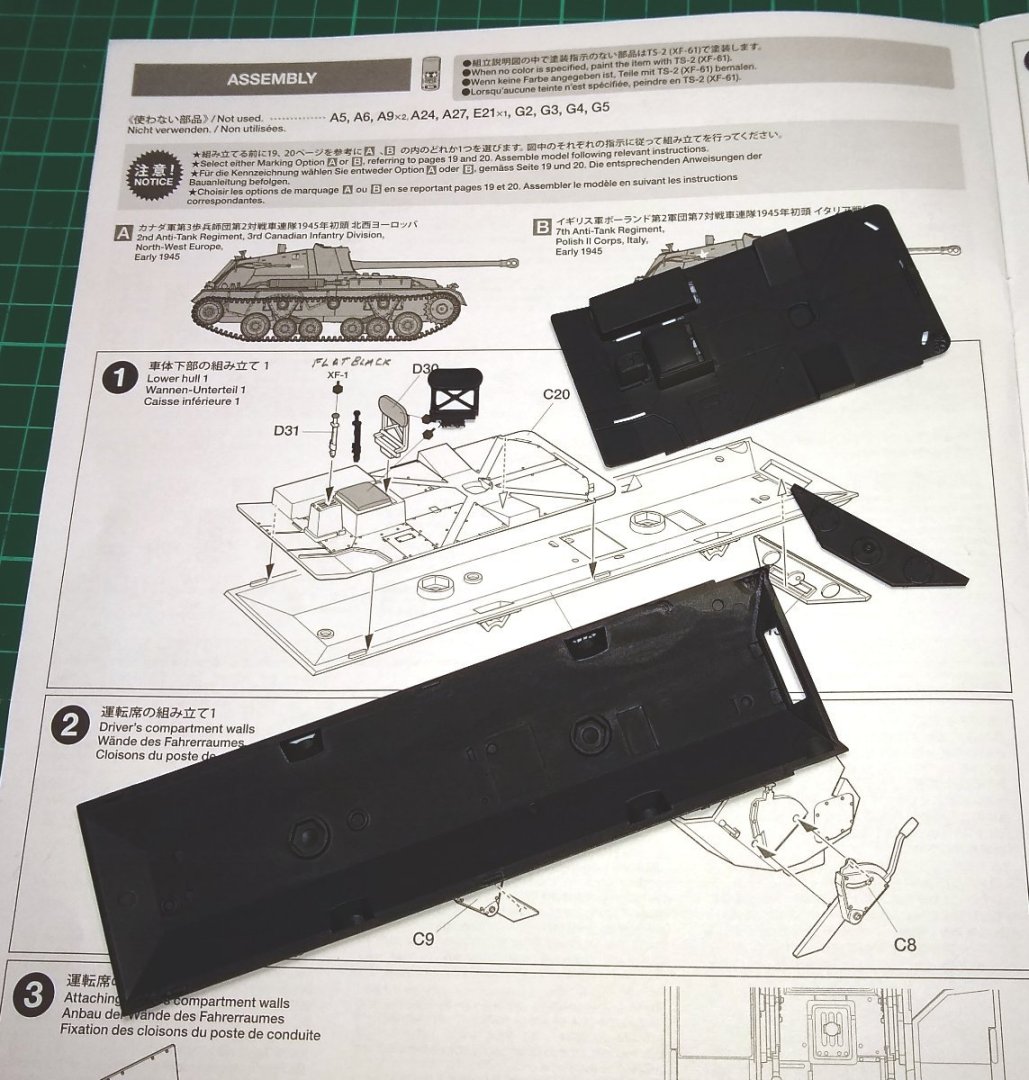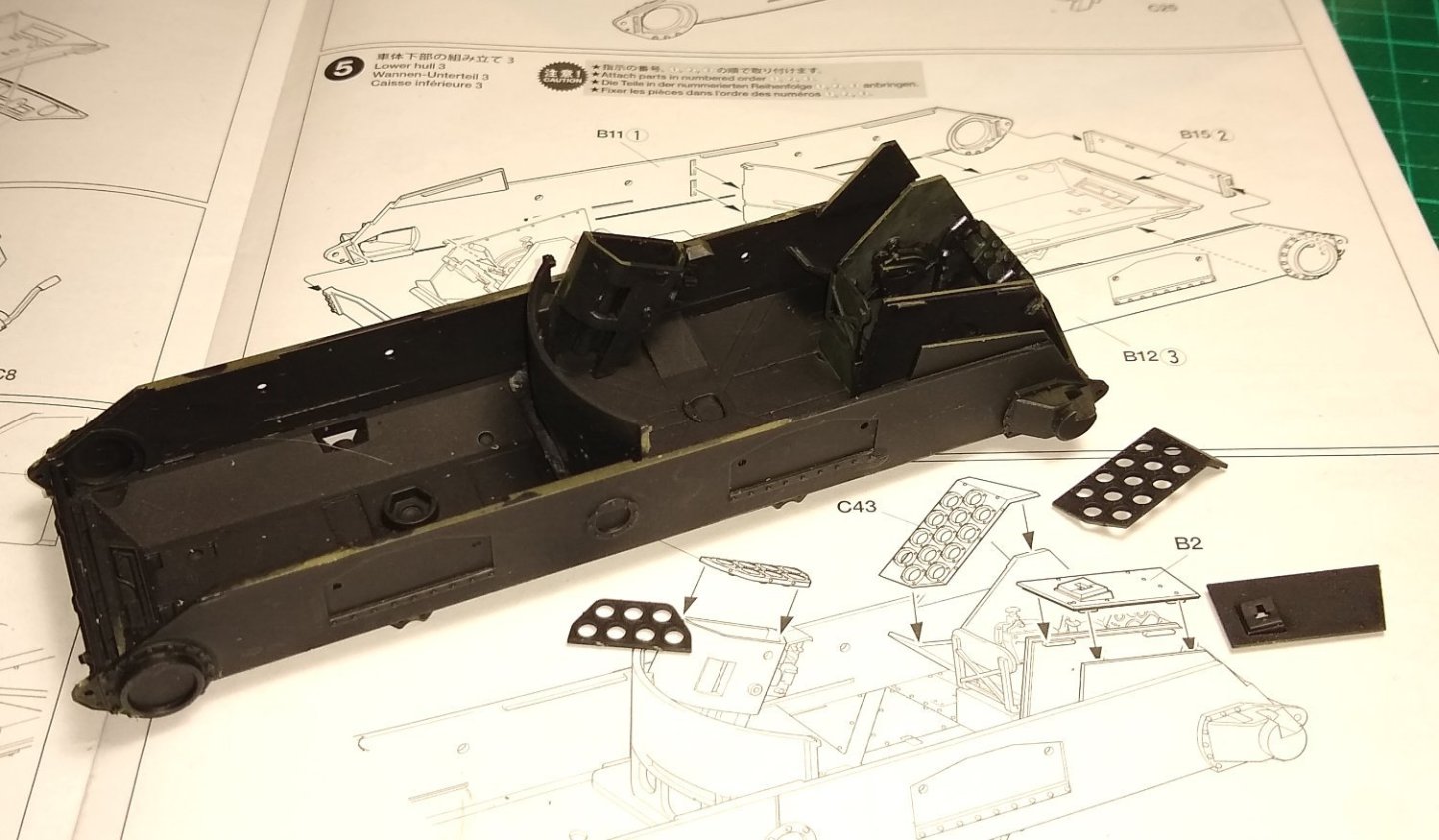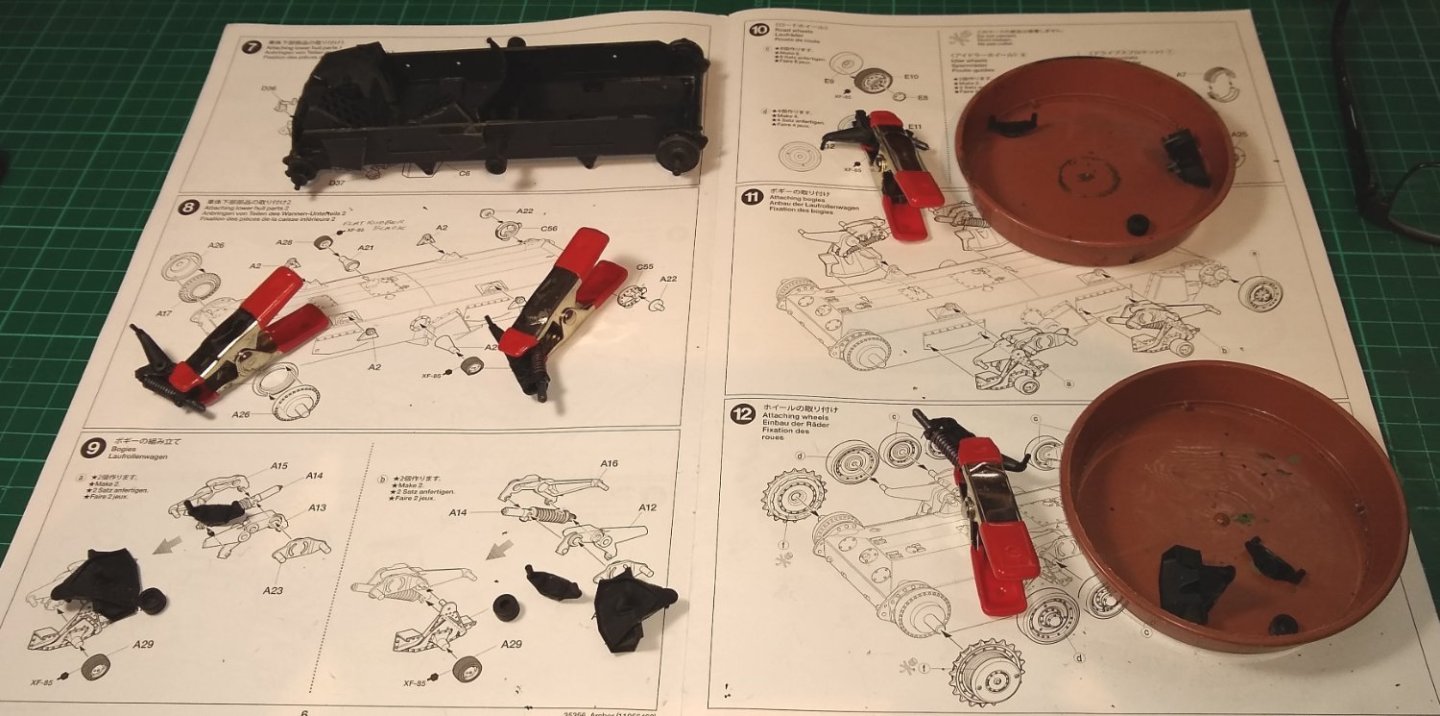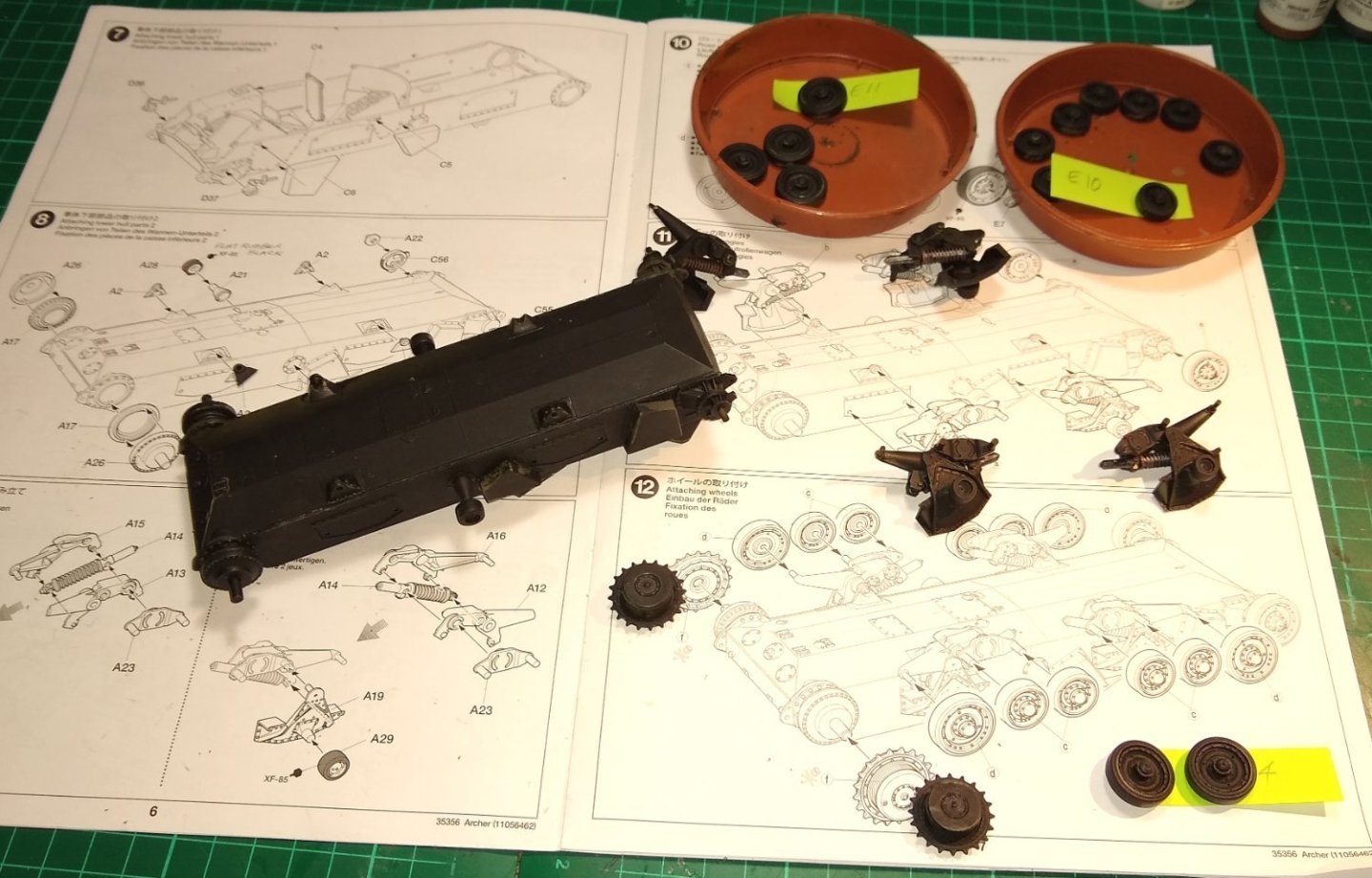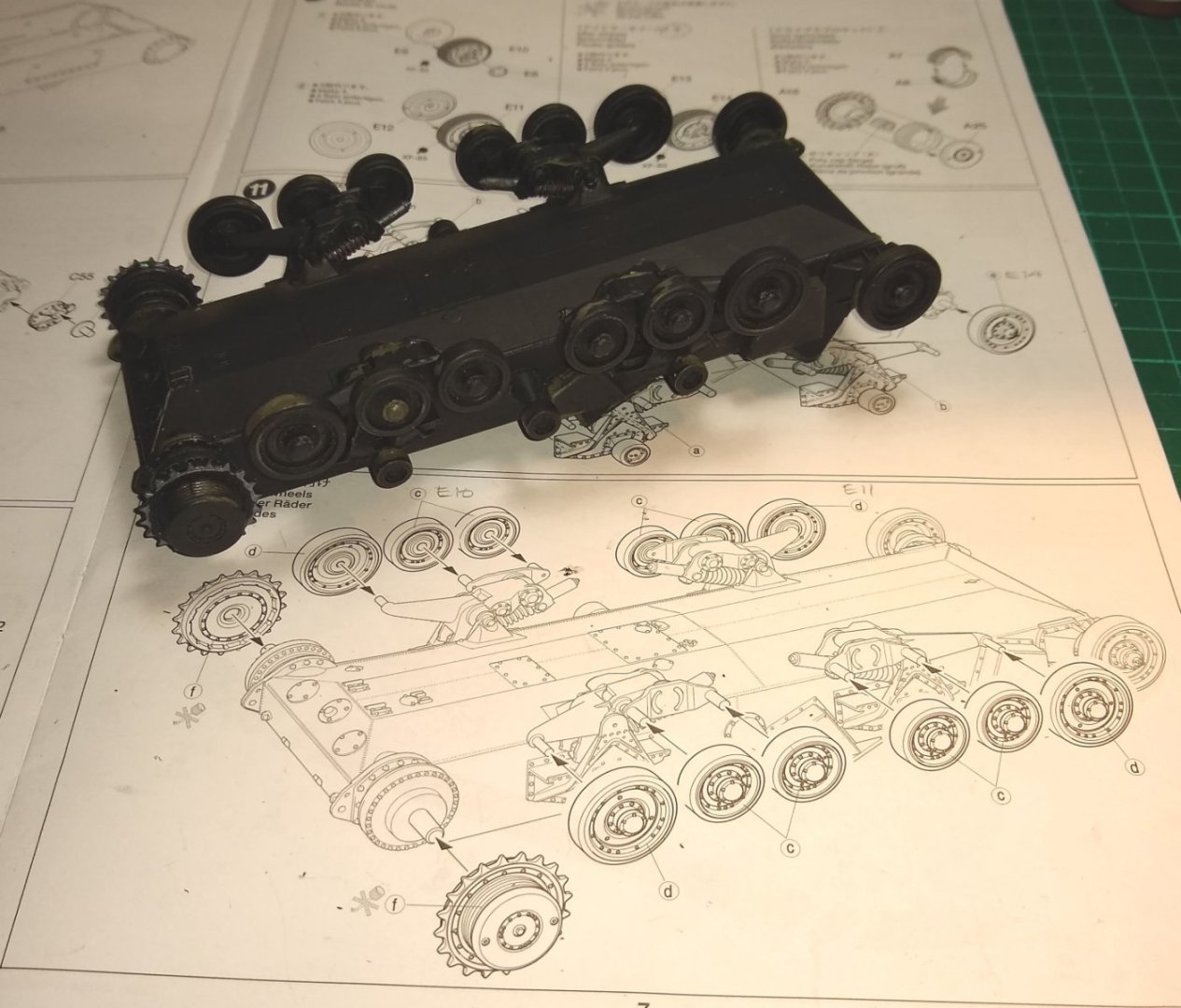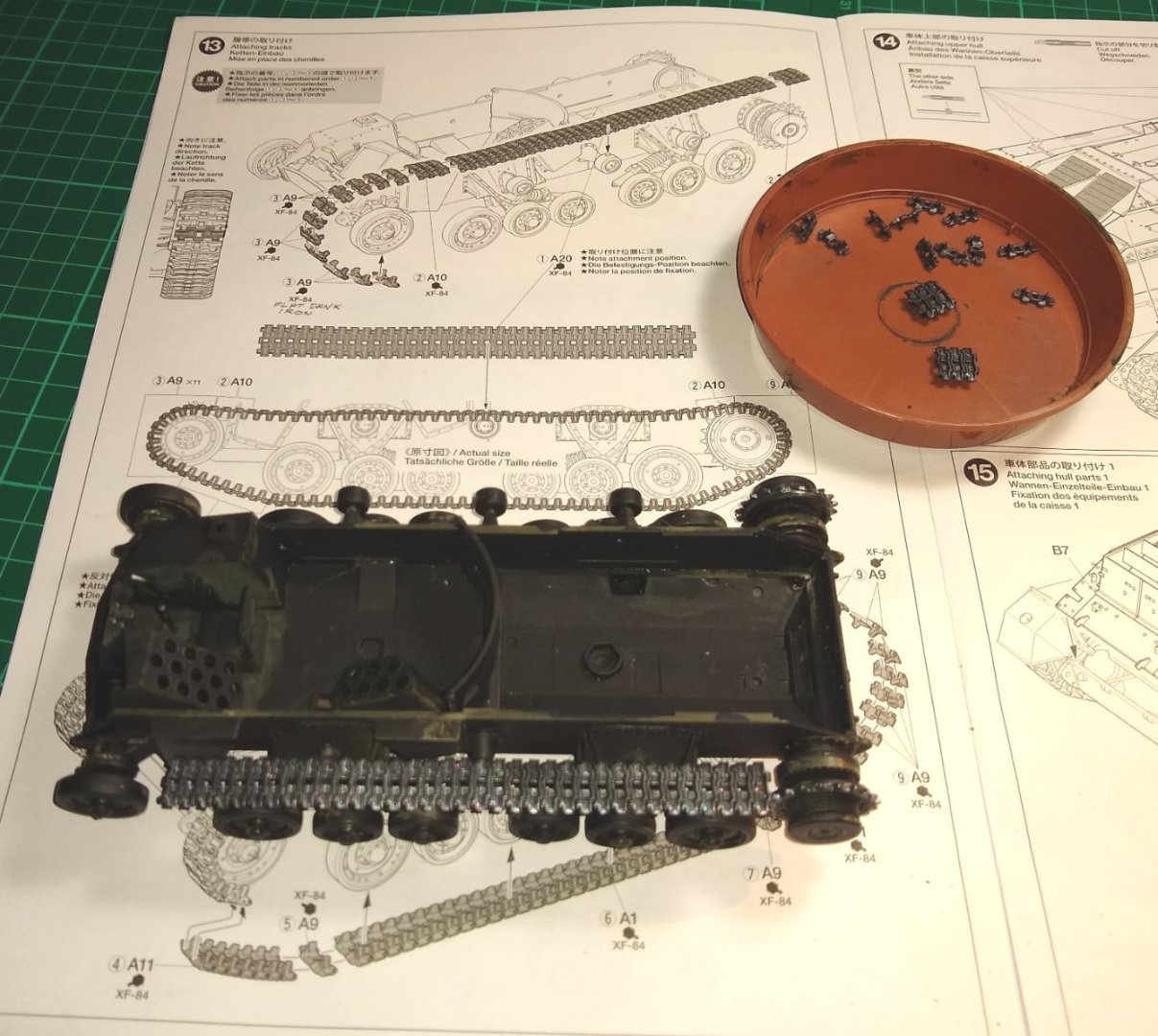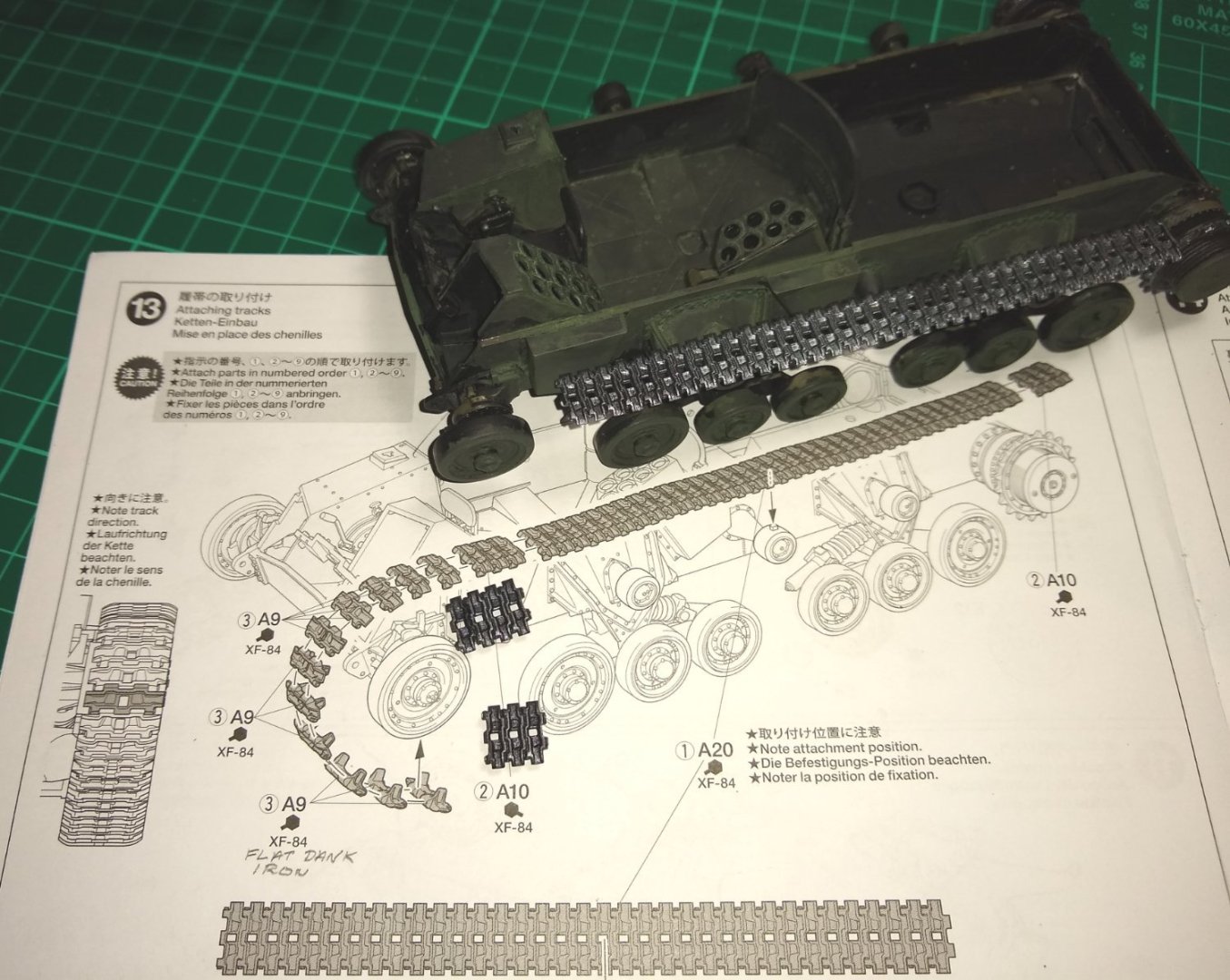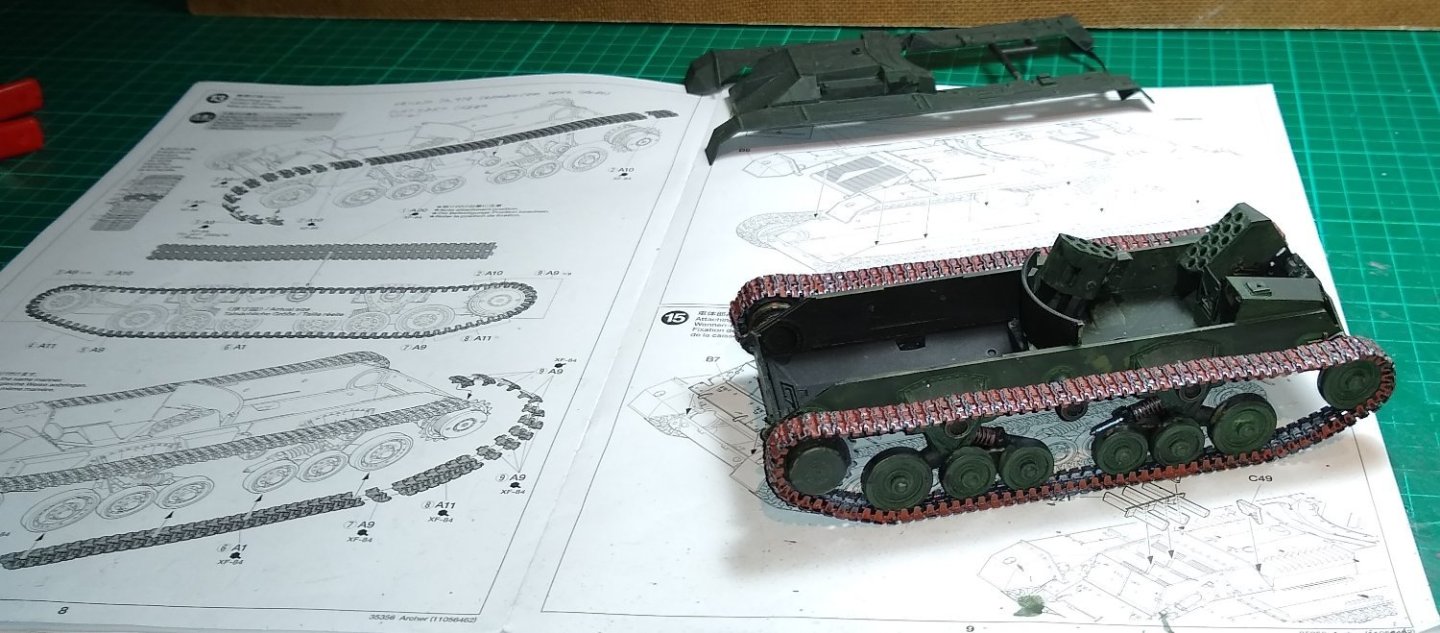-
Posts
864 -
Joined
-
Last visited
Content Type
Profiles
Forums
Gallery
Events
Everything posted by Rik Thistle
-
Andy, Egilman, Thanks for the feedback....much appreciated. A bigger shelf is a better idea I've got the type of adjustable shelving shown above...so there is still space for a couple of more shelves 😉 And Yes, the livestock frequently got in the way.... As kids on our farm we always found the cows as friendly, inquisitive animals. The Bull was a different story! Richard
-
Hi all, This is my final update on the Archer scenario build. Firstly, another look at the Tamiya box art. For the scenario, I created a farm location somewhere in Normandy. A particular feature of that countryside is the thick hedges planted on raised banks, and ditches bordering most fields. The top right of the scenario was a bit bare so I made a concrete water trough for the cattle. Early prototype on the right, and a finished one on the left coated in slightly diluted AK Grey putty. A would later add some weathering to it. Below, the Archer crew painting details. I've just noticed that the box art shows black leather boots but the instructions call for Red Brown XF-64 paint.... ah well, too late now....the Commander has shiny red leather boots! Plenty (sieved and microwaved) garden dirt added to the rear (and front) of the Archer. Marguerite waits patiently for the 'tractor' to throw over some hay. Unfortunately for her, and some others about 1 mile away, it is not hay being delivered today! Cattle are generally curious animals and had a habit off staring at soldiers hiding in the hedgerows, and even wandering over to get a better look. The enemy found this a bit of a nuisance, to say the least. Below, the final overall scenario - the Archer has pulled in to the field to target the enemy, whilst not blocking the farm path. A passing infantry patrol has had a chat with the Canadians and are now departing. One infantryman wants to watch the first shell being delivered. This was an interesting build. Some of the Tamiya Archer parts were a bit more delicate than the Churchill tank parts, and it was a slightly more complex build. I think I prefer to see the 'machinery' in use in a typical setting - it gives context to purpose and effect on the local communities. I'm not sure what my next build will be...possibly back to the machine shop for another metal model as the warmer weather is showing signs of moving in 🙂 Finally, thank you all again for the Likes, Comments and perspectives (on what was a very difficult time for the world). I don't think a Build really works unless opinions and advice are shared. Take care, Richard
-

Informative video about 18th Century Sailing Battleships
Rik Thistle replied to Peanut6's topic in Nautical/Naval History
Kev, That is a very informative video - thanks. There were so many different systems onboard that all needed to work together perfectly for those ships to operate the way intended. Quite an achievement. Richard -

What kind of Cutting Mat choose
Rik Thistle replied to Olaf's topic in Modeling tools and Workshop Equipment
I use a mixture of A3 and A4 matts fitted around my L-shaped desk.... something like this https://www.amazon.co.uk/gp/product/B001IOZUHK/ref=ppx_yo_dt_b_search_asin_title?ie=UTF8&th=1 ...but with a 3mm thickness. They last for years, although solvents and scraping can remove some of the 1cm guidlines over time. So I just rotate the matt by 180 deg to get a fresh working area. I don't recall ever cutting through one, but may have managed (when not concentrating) to drill some small holes through them. Richard -
top of the bales into the loose straw. Yes. And that was one of the safer activities 🙂 When I think about all the open machinery in those days (belts, gears), riding on the back of trailers, climbing farm buildings/trees etc.... I'm surprised we are are still here. But it did build up a strong 'risk assessment' instinct. The childhood was maybe not that different from being brought up in a town...it was just more easily accessible? Richard
-
Alan, Yes, run-ins with nettles was part of growing up ... Docken Leaves helped reduce the sting a bit. And barbed wire was just one of the many challenges we learned to navigate ...wish I could turn the clock back 😉 Just Googled it, and it seems you have nettles in Florida...I guess they grow just about everywhere. Richard
-
Thanks Alan, I was brought up on a farm - dairy, beef and crops....therefore have climbed over many gates and wiggled through many fences as a child. So have some vague recollection of how they looked. But most recent info has come from the web. As with many things, close examination soon reveals the flaws but from a distance it looks OK...and Marguerite and her herd seem to cope with it. But once the shells start going off, I hope she scarpers away from the fence rather than through it! Richard
-
Hi all, Thank you all for the Likes and advice. Now, an update on my 'fencing' construction etc. Below, fence posts, hinge/latch posts and the field gate. Above - I bought some matchstick blanks to use as fence posts, and gave them a grey undercoat. During the WWII era I suspect many fence posts were made using tree branches, but I think some probably used sawn timber. On the left are wooden strips wood-glued together to form the end supports for the gate. And finally the gate, based on images from the period. Below - Fixing the fencing wire to the posts caused a bit of head scratching....normally staples would be used but at 1/32" (0.75mm) across I couldn't see how I could make them that small yet strong enough to press in to the wood. So 0.35 mm wire (...same as the fencing wire) was used to form a 'hook' that had the long leg glued in to a drilled hole in the post. That worked as well as I could hoped. Laying out the posts on the raised banks to check I had the right number to look right. I also added braces to the two support posts. The posts were slightly tapered to give the impression of being made from actual tree trunks or large branches. The semi-circular groove on the right is caused by the sweep of the gate dragging on the ground. I also added some farm tractor tyre ruts. Finally I added two shades of AK grass. I don't have a Static Grass Applicator, but grass in farm fields, that hold livestock, tends to be flattened and bumpy anyway. Trying to catch a 'staple' in focus....the paint bottle was positioned to assist the camera find focus. Gate mounted in position. I suppose I could have made miniature metal hinges for the gate, but made do with tiny blocks of wood to simulate the hinges. Another view of the gate. And finally, Marguerite still patiently waits for the hay to be thrown over. Next is probably painting the Archer crew, finding the makings of a suitable tree for the left side of the scenario, and adding the hedge rows, There's also dirt to be added on the road, small rocks in the ditches and more weathering of the vehicle and landscape. That's it for this week, all the best, Richard
-
Thanks Andy. I am assuming that on the way to Verrieres (before the fighting started) the Archer did pass some farms. The 17Lb gun may have been accurate up to about 1 mile range (?), so perhaps was used to slow down German tanks headed towards reinforcing the ridge? The Verrieres Ridge itself does, as you note, look out over some open countryside, from what I see on that video. I can find Operation Spring maps on the web eg .... https://valourcanada.ca/military-history-library/operation-spring-1944/ If I need more I'll drop you a PM. Thanks again, Richard
-
Hi all, Another update on progress on the Archer, and where I've sited it. Firstly, adding the final parts to the Archer. The gun mantle was slightly difficult for me to locate on the fighting compartment...there are a couple of alignment slots on the compartment/breech and I eventually got the mantle settled in the correct position. The two tow cables wind their way round the front of the vehicle, held in position by some very tiny hooks. A couple of them did fly out of the tweezers but were found. Below, the tow cables in position. Judging the cut length had to be done carefully. Below, the Archer pretty much assembled. The Canadian marking transfers still to be added plus some more weathering. A quick look at the crew, awaiting assembly . I've decided to locate the Archer on the way to the Verrieres Ridge, as mentioned by Andy (realworkingsailor) in post #5. I wandered through Google Maps to find a suitable location that matched how I already envisioned the scenario. Whilst doing that, this came to my attention. During WWII the Germans made an art out of 'hedgerow warfare'. A great read on that subject is here 'Combat in Normandy’s Hedgerows' -https://warfarehistorynetwork.com/article/combat-in-normandys-hedgerows/ A couple of extracts follow.. "Pushing inland, the 26th primarily encountered open fields, and from June 7 to 12 they marched 20 miles, plowed through moderate resistance, and bagged POWs. But deeper inland enemy-occupied hedgerows abounded, freezing the American momentum on June 13 at Caumont le Repas. Locked in a 30-day stalemate, the GIs soon discovered that the terrain fostered a glaring paradox. They could not see the Germans, but the Germans could see them. The hedgerows reduced visibility and precluded mobility, forcing both sides to exchange mortar fire and conduct reconnaissance patrols. -------- Cattle, living and dead, were abundant across Normandy and delivered vital information in their own right. A dead cow cautioned that a field or trail might contain mines and acted as a landmark, giving GIs a sense of direction in the confusing twists and turns. Grazing cows were often a sign that an area was free of mines. American and German soldiers monitored the behavior of cattle. Those that stared at a hedge might be indicating that an enemy soldier was hiding in or near it." It would seem that French farmers divided land in to fields by using very thick hedgerows planted on raised banks. The Brits were probably a bit more used to hedgerows (and dry stone dykes) but even then the French ones would still be quite a challenge to navigate. Below, a picture of a typical modern French hedgerow in the Verrieres region. I'm not sure if back in WWII days the farmers had got round to using fence posts and wire to keep animals confined. More later. Also ditches seems to be a very common feature at the edges of these French fields. The pic below is close to the scenario I had imagined, and is in the Verrieres locality. The black box outlines the Archer position. The metal gate is modern - a wooden one will replace it. The raised hedges are still apparent but now, I suspect, reinforced by wire fencing. The road would not be Tarmacadam back in the day....it would likely still be dirt. A sketch of my scenario. I'm now thinking about whether or not I need to replace the fencing with banks and hedges. Preparing the scenario base. A quick check to see if the Archer fits and the layout makes sense. Not sure about the gun sticking out though :-# ? A quick layout check with some of the main players. Lots more still to do. But I was glad to have found 'Combat in Normandy’s Hedgerows' - https://warfarehistorynetwork.com/article/combat-in-normandys-hedgerows/ ... it has opened my eyes and added new dimensions to the scenario. All for now , Richard Edit: Fencing wire was invented long before WWII, and with barbed wire being used in WWI and WWII prisons. Whether it was yet cost effective for French farm widespread usage around WWII time I'm not 100% sure, especially since they already had quite effective hedges (for containing livestock). However there are images on the web showing some fenced French fields during WWII eg https://www.theatlantic.com/photo/2011/07/world-war-ii-axis-invasions-and-the-fall-of-france/100098/ 10. The Royal Irish Fusiliers of the British expeditionary forces come to the aid of French farmers whose horses have been commandeered by the French Army. A tank is hitched to a plow to help with the spring tilling of the soil on March 27, 1940. #
-
OC, Great build! I've seen the Harriers do their stuff at many airshows...nothing beats seeing a fighter jet flying backwards! I imagine you have read it, but just in case, 'Sea Harrier Over The Falklands' - https://www.amazon.co.uk/Sea-Harrier-Over-Falklands-PAPERBACKS/dp/0304355429 is a no-punches-pulled account of what 'possibly' happened in the Falklands. "Sharkey Ward commanded 801 Naval Air Squadron, HMS Invincible, was senior Sea Harrier adviser to the Command, flew over sixty missions and was awarded DSC. Yet had he followed all his instructions to the letter, Britain might well have lost the Falklands War." Richard
-
Hi all, Another short post, that actually covers a fair bit of work but since most of it is adding small details etc there weren't many pictures taken. Firstly filling in some gaps etc with AK Grey Putty. Then on to the exhaust system. I've tried giving it a bit of weathering/rust and it looks OK, from a distance. Clamping together two halves of the exhaust. I've bought some Tamiya 1:35 scale livestock. It is actually quite lifelike although the join round the neck needed a bit of filling. I had wondered how French farms had kept functioning during the war - it must have been quite challenging. It seems horses were nabbed to be used as beasts of burden by the military forces. But cattle etc were probably left alone? Below - a possible scenario. The Archer has just pulled up to the side of the road in support of the quickly advancing Infantry. Marguerite suspects this is the daily hay delivery, Muffin is wandering over to have an investigation also ... as soon as the first shell departs neither will be seen for dust. Meanwhile a foot patrol passes by along the country road. The fuel drum is empty. I'll make up some decent looking trees, and I'm trying to figure out a way to use another French road sign :-) I'm aware the Archer is Canadian and the troops are British. But I guess each supported the other as required? Thanks for the Likes and suggestions in the previous post - much appreciated as always. Richard
-
TALLY HO on YouTube Yes, excellent bunch. And they cover the age spectrum, seem very happy at what they do and have a very good project manager (and owner) in Leo. It's one heck of a project. Richard
- 174 replies
-
- Vigilance
- Sailing Trawler
-
(and 1 more)
Tagged with:
-
Andy, Yes, I've watched it...some useful info in there. I was going to say 'neat reversing'...over the logs on to the pontoon boat (4.57 mins)....but of course he is in a Forward gear. I wonder where all the logs came from... they pop up in a lot of different settings...was there a dedicated 'tree felling & supply division'? Hmm... I guess it would be the Royal Engineers. Richard
-
James, I had a read of your link, and then found that the Spitfire sadly failed to sell.... Fully restored Spitfire that shot down Focke-Wulf 190 fails to sell at auction - https://www.forces.net/technology/aircraft/fully-restored-spitfire-shot-down-focke-wulf-190-fails-sell-auction But some interesting info contained in the link. Richard
-
Egilman, Thank you for all that - great info. I agree that a Bailey Bridge would make a good setting but the size would not work with my 10" deep shelves. As part of my re-education of WWII events (last time was at school, a long time ago) I had read that the USA had been quite pernickety about standards, especially interoperability between similar USA made equipments, but that would have held for only within the USA itself. Seems a bit of an advantage was lost with the UK and USA building Bailey Bridges to different tolerances. Anyway, as you mention, I have moved away from the idea of using a Bailey Bridge. I've probably got a shelf footprint of about 10" x 12" to play with...much the same as the Churchill tank. When I bought the Tamiya Archer kit I did so because it looked quite detailed and unusual. It also had an interesting development history, and was used by the Brits, Canadians and Poles. But I hadn't yet finished my Churchill scenario so didn't quite appreciate the enjoyment that designing and building 'scenarios' gives. With 20:20 hindsight I might have chosen a different kit. But now that I am part way through the Archer kit I don't really regret that decision....the Archer could just be positioned on the shelf without a scenario, and then look for another kit but this time with the end-scenario in mind. Regards, Richard
-
Andy, That's a good picture and I have seen it. It tells a reasonably peaceful story. The slight issue with the Tamya Archer is that the three man crew are in the middle of firing off shells. I have toyed with maybe re-modelling them in to more passive positions but that could be a hassle. So I need to come up with a scenario where the Archer is engaging the enemy, but with some kind of side story(s) and in an interesting setting. I do have some 'brick wall' left over from the Churchill build, and Tamiya's Oil Drum and Jerry Can kit. ( https://www.amazon.co.uk/Tamiya-35026-Jerry-Cans-Scale/dp/B000WNCDLO ) And a decent amount of hedge material, grass etc. Also, I have a thought about getting some model critters that one would see in the countryside. Anyway, plenty time to get my head round this, but any further thoughts....then keep 'em coming. Thanks, Richard
-
Hi all, Some more build pictures etc on the Archer self propelled gun. There are a lot of parts to it, much more than the Tamaya Churchill tank, so I'm only posting pics of significant stages. Below, shows how the Upper Hull is fitted, plus some of the hull parts. The paint is mostly drab olive, applied with brushes. I've started adding a bit of weathering but lots more to come. Below, some of the internal fittings installed eg moveable gun mount, seats etc. I'm not sure if the seats would have had padded brown leather upholstery, or just be plain sheet steel. But to add a bit of colour contrast I've given the crew the the benefit of brown upholstery, and added some shiny (worn) metal highlights. Another pic of the above, from a different angle. The change of colour is due to me using the Flash on my phone, or not. A good look inside an actual Archer is available here.... 'Inside the Chieftain's Hatch: 17PR SPM Archer, Pt 2' Above - As you can see, everything has been painted drab olive green. This may have been part of a 'refresh' for the museum, but I suspect the paint job isn't that different from what was used in WWII. Talking of paint, I have moved away from the AK Interactive 'wet palette' to a small mixing dish. The palette was prone to the colours running in to each other if moved....otherwise, it's still a useful tool. Now preparing the Fighting Compartment sides for fitting to the hull. The shells should be a shiny brass colour, but the closest I had was a dark yellow. Instructions on how to attach the sides. And now it is beginning to look a bit more like a self-propelled gun. And a final pic from above. I still haven't figured out a compact scenario for this Canadian Archer.... but there are a couple of wartime pictures here that might give me some inspiration.... https://tank-afv.com/ww2/gb/Archer_17pdr_SPG.php ie ...in amongst a few comrades and some supplies - 'The Archer conducting fire support. Goch, Febuary 1945.' and in a treeline - 'An Archer near Nutterden, 9 February 1945'. Any other suggestions gladly received. Well, that's it for this week, back soon, Richard
-
Firstly, and as usual, thank you for the feedback and likes. Now a brief update on the Archer hull, wheels and tracks. Below - The build starts off quietly with fitting a seat and some end plates. I had painted all the sprues primer matt black, knowing I'd probably have to scrape the paint away from mating glued surfaces. I think it's a 50:50 decision whether to wait till the sub-assemblies are ready before priming, or priming the bare sprues. I did wash the bare sprues in warm soapy water first. Some more interior panels and bulkheads being fitted, plus the shell racks. Now getting on to the slightly more tricky (for me) stuff...the suspension and wheels. Apart from the sprocket wheel at one end and a metal wheel at the other end, the middle wheels all have black rubber 'tyres'...in the kit there are no separate tyres....I just need to paint the wheel perimeters black to simulate tyres. Another pic of the suspension and wheels. Now the that the undercarriage is done, next is the tracks. The tracks are a bit fiddly - made of numerous single links, small groups of links and two long lengths of links. A middle guide runner, one each side of the hull, has a single locating pin on it.....a specific locating hole on the top long length of track fits onto the that pin. Below - the instructions showing how the single links wrap around the end wheels. Finally, the tracks are completed. I gave them a base coat of silver paint, then filled in the gaps with some mahogany brown paint and then later went back over the outer part of the tracks with gunmetal grey paint. Also, earlier, I had started laying some dark green paint onto the hull surfaces. I'm only using Acrylic paint. I haven't recently thought too much about the final scenario/diorama, although incorporating a Bailey Bridge in to the layout was investigated. However, the bridge will be quite long so that will make the footprint of the layout a bit on the big side. On the other hand, Bailey Bridges did have walkways to their side for infantry to use...so it might be possible that the British Army figures I have could be passing in one direction whilst the Archer moves in the other. Thing is, the Archer crew are in the act of firing and I doubt they would draw enemy fire on to a vital piece of equipment such as a Bailey Bridge. Still thinking. All for now, Richard
-
Andy, the most plausible would be Operation Totalize, Aug 7 - 10 1944. I'll have a read up on period. And what happened thereafter whilst I assemble the Archer. It might be that my scenario/diorama is just the Canadian and British soldiers having a brew-up near the end of the war. Mind you, the Tamiya supplied figures look like they are in the middle of sending out some shells...so the brew-up would have to wait. Richard.
-
Chris, I confess I had to Google Wespes and StuGs! but now I get it...17 Lbs of visitor incoming. Andy, 2nd and 3rd....yes, a typo is most likely. Just had a re-read of your Churchill links - very useful. But the downloadable .pdfs do take a while - however , I'm not going anywhere so time is not an issue. I kinda guessed the British Army uniform colours may have been different from the Canadian ones. But I'll figure out a way how their paths crossed in the Archer scenario 😉 Richard
About us
Modelshipworld - Advancing Ship Modeling through Research
SSL Secured
Your security is important for us so this Website is SSL-Secured
NRG Mailing Address
Nautical Research Guild
237 South Lincoln Street
Westmont IL, 60559-1917
Model Ship World ® and the MSW logo are Registered Trademarks, and belong to the Nautical Research Guild (United States Patent and Trademark Office: No. 6,929,264 & No. 6,929,274, registered Dec. 20, 2022)
Helpful Links
About the NRG
If you enjoy building ship models that are historically accurate as well as beautiful, then The Nautical Research Guild (NRG) is just right for you.
The Guild is a non-profit educational organization whose mission is to “Advance Ship Modeling Through Research”. We provide support to our members in their efforts to raise the quality of their model ships.
The Nautical Research Guild has published our world-renowned quarterly magazine, The Nautical Research Journal, since 1955. The pages of the Journal are full of articles by accomplished ship modelers who show you how they create those exquisite details on their models, and by maritime historians who show you the correct details to build. The Journal is available in both print and digital editions. Go to the NRG web site (www.thenrg.org) to download a complimentary digital copy of the Journal. The NRG also publishes plan sets, books and compilations of back issues of the Journal and the former Ships in Scale and Model Ship Builder magazines.

